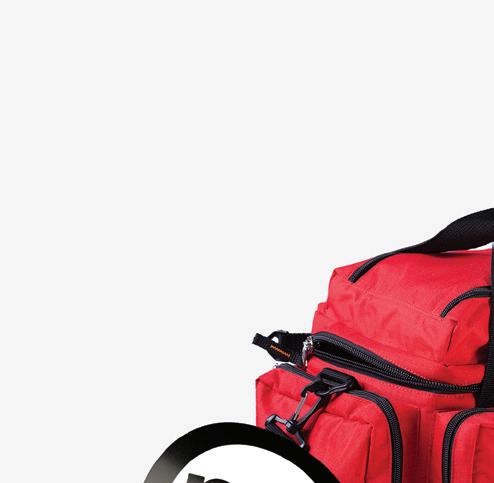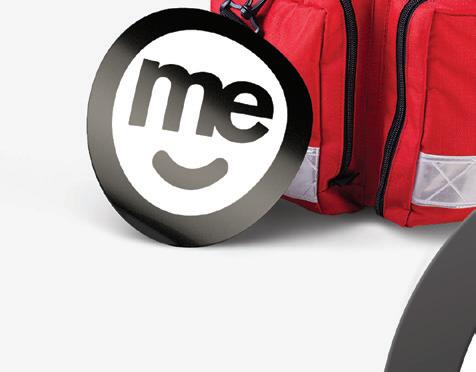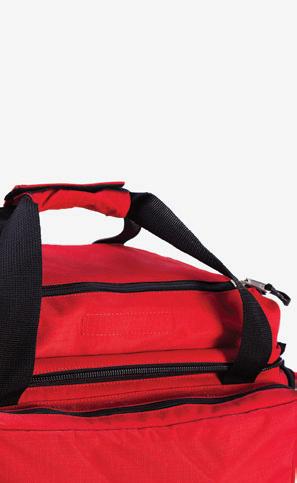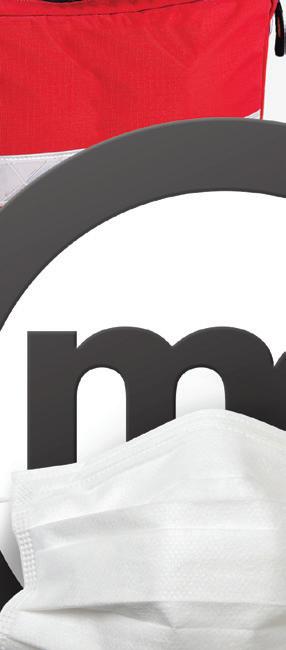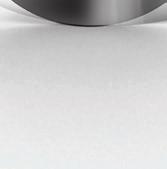page 14


page 14

You spend your day caring for others, so let us care for your retirement nest egg. Whether retirement is 2 or 20 years away, Aware Super can help you maximise your savings and get retirement ready.
Our digital Retirement Guide has plenty of tips, advice and real member stories, plus a helpful checklist to guide you every step of the way. With super advice and super returns Aware Super is super helpful.



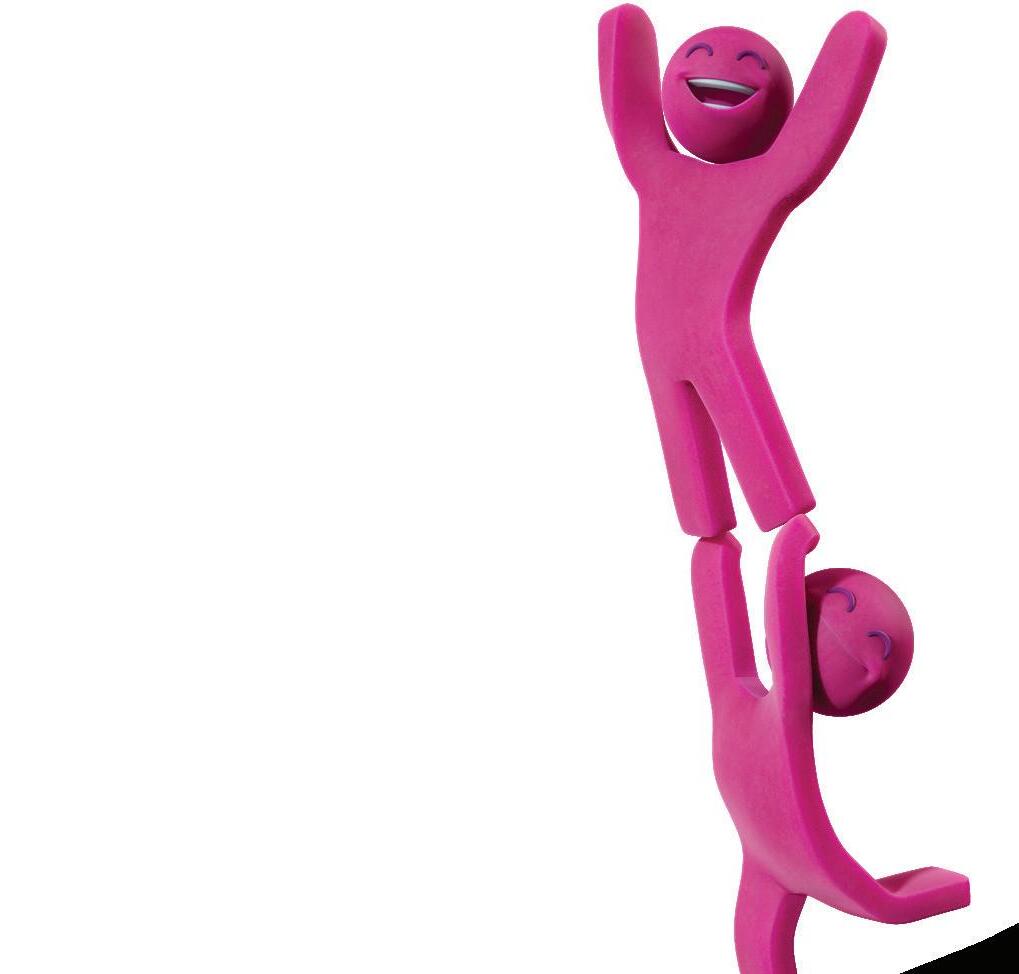


NSW Nurses and Midwives’ Association
For all membership enquiries and assistance, including The Lamp subscriptions and change of address, contact our Sydney office.
Sydney Office
50 O’Dea Avenue, Waterloo NSW 2017 (all correspondence)
T 8595 1234 (metro) 1300 367 962 (non-metro)
F 9662 1414 E gensec@nswnma.asn.au W www.nswnma.asn.au
Hunter Office
8–14 Telford Street, Newcastle East NSW 2300
NSWNMA Communications Manager
Gia Hayne
T 02 8595 1234 (metro) T 1300 367 962 (regional)
For all editorial enquiries, letters and diary dates
T 8595 1234 E lamp@nswnma.asn.au
50 O’Dea Avenue, Waterloo NSW 2017
Produced by
Hester Communications T 0414 550 376
Press Releases
Send your press releases to: F 9662 1414 E gensec@nswnma.asn.au
Editorial Committee
Shaye Candish, NSWNMA General Secretary
Michael Whaites, NSWNMA Assistant General Secretary O’Bray Smith, NSWNMA President
Michelle Cashman, Long Jetty Continuing Care
Richard Noort, Justice Health
Liz McCall, Byron Central Hospital
Diane Lang, South East Regional Hospital, Bega Valley
Karen Hart, Wagga Wagga Base Hospital
Printed by
Printed by IVE Group Sydney
Advertising
Danielle Nicholson T 8595 2139 or 0429 269 750 F 9662 1414 E dnicholson@nswnma.asn.au
Information & Records Management Centre
To find archived articles from The Lamp, or to borrow from the NSWNMA nursing and health collection, contact: Adrian Hayward, Coordinator. T 8595 2175 E gensec@nswnma.asn.au
The Lamp ISSN: 0047-3936
General Disclaimer
The Lamp is the official magazine of the NSWNMA. Views expressed in articles are contributors’ own and not necessarily those of the NSWNMA. Statements of fact are believed to be true, but no legal responsibility is accepted for them. All material appearing in The Lamp is covered by copyright and may not be reproduced without prior written permission. The NSWNMA takes no responsibility for the advertising appearing herein and it does not necessarily endorse any products advertised.
Authorised by S. Candish, General Secretary, NSW Nurses and Midwives’ Association, 50 O’Dea Avenue Waterloo NSW 2017
Privacy Statement
The NSWNMA collects personal information from members in order to perform our role of representing their industrial and professional interests. We place great emphasis on maintaining and enhancing the privacy and security of your personal information. Personal information is protected under law and can only be released to someone else where the law requires or where you give permission. If you have concerns about your personal information, please contact the NSWNMA office. If you are still not satisfied that your privacy is being maintained, you can contact the Privacy Commission.
Subscriptions for 2024
Free to all Association members. Professional members can subscribe to the magazine at a reduced rate of $30. Individuals $84, Institutions $140, Overseas $150


14
COVER STORY Sick and tired of being overworked and underpaid It was loud and raucous with a lot of colour and movement but the message from thousands of members at a rally outside Chris Minns’ electoral office was clear and unequivocal: we deserve pay parity.
PRIVATE HOSPITALS
Strike wave follows latest Ramsay ‘No’ vote
Ramsay Health Care nurses in NSW hold historic work stoppages for higher wages and safer staffing.
18 ANNUAL CONFERENCE
Gender equity at work is a union issue
Men and women want respect, security and the ability to manage work and care – but are they getting it?
20 ANNUAL CONFERENCE
In midwifery, relationships matter
Continuity of care by well-trained and well-remunerated midwives in midwifery group practices leads to the best birthing experiences and health outcomes for women and babies, according to Hannah Dahlen AM, Professor of Midwifery at Western Sydney University.
22 AGED CARE
Union campaign wins better Opal deal
NSWNMA members at Opal aged care facilities have won an improved pay increase, more sick leave and an agreement to ensure the company complies with its care minutes obligations.

25
ANTI-PROTEST LAWS Call to repeal anti-protest laws
The NSWNMA’s 2024 annual conference declared its opposition to the state’s controversial anti-protest laws.













The Mitsubishi Outlander Plug-in Hybrid EV is Australia ready, for just about anything. With electric battery power plus hybrid petrol range, it gives you the best of both worlds on and off the road. Upgrade your company car and go the distance with more business class. Ask about getting into an Outlander Plug-in Hybrid EV with Mitsubishi Motors Business Advantage^.

Available now with flexible leasing options* PLUS enjoy member benefits with National Fleet Pricing today.

































A statewide strike and large, dynamic rallies have shown Chris Minns and his government our resolve as we pursue a just and deserved pay rise.
Kogarah didn’t know what hit it.
On September 10, a tsunami of nurses and midwives from all of Sydney’s main metropolitan hospitals converged on the city’s southern suburb to rally outside the Premier’s electorate office and repeat the message Chris Minns has so far ignored: we deserve a 15 per cent pay rise.
For all the good humour and energy of those present, there is still a palpable sense of frustration and impatience among nurses and midwives in the Public Health System with the government’s intransigence over our pay.
It is difficult to see how ratios can be successfully implemented in NSW unless nurses and midwives’ remuneration is competitive with other states.
During the terrible ordeal of COVID-19 when nurses propped up a bursting hospital system and literally put their lives on the line to protect the citizens of NSW, the LiberalNational government of the time rewarded them with a wage freeze and a callous disregard.
The NSW Labour opposition rightly took the Perrotet government to task for their dereliction of duty to the community, the health system and its workforce.
They promised better and nurses and midwives took them at their word. Many of our members gave up their precious time and energy, despite the cumulative exhaustion built up during the arduous years of the pandemic, to help get the Minns government elected.
On election day, throughout the state, voters were met at polling booths by nurses and midwives advocating for change.
With the election of a new government there was an there would be change and together we would build a robust public health system to future proof the health of NSW citizens and that the workforce would finally be treated with the respect it deserves.
Of course, ratios are central to this, and we acknowledge the government’s commitment to implementing them. But pay is also important.
In fact, it is difficult to see how ratios can be successfully implemented in NSW unless nurses and midwives’ remuneration is competitive with other states.
We understand that the government has to juggle competing demands on the budget, but the lessons of the last five years are stark and critical.
The World Health Organization has made it clear that economic policy needs to align with health goals. WHO has warned that health demands will continue to rise and there are increased risks of pandemics due to climate change.
When we say a 15 per cent pay rise is critical, this is no empty rhetoric, it is economic logic. Keeping the nurses we have and attracting more to fill ratios will require the government to recognise the labour market realities that are influenced by the wages paid in other states.
During the election campaign the government promised to reinvest productivity savings into wages. We found those productivity savings in a business case prepared by Deloittes. These efficiencies have been validated, we now wait to see if these will drive government policy. Disappointingly, it hasn’t yet driven a revised wages offer.
The government was also elected on a platform of gender equity and supporting women in work. Yet the
gender pay gap for the public service workforce has worsened under this government. Nurses and midwives are the biggest public sector workforce, so addressing our wages also addresses the gender bias that keeps women’s wages lower.
As the Lamp went to print the largest ever strike of nurses and midwives in NSW, with rallies outside Parliament House in Sydney, in Tweed Heads, Albury and other sites, saw 10,500 members demonstrate our power. As a result the NSW Government is now willing to negotiate! For more detail go to our website.
At our annual conference a significant resolution was passed to endorse a decision by Council to make the President’s position a paid role within the NSWNMA.
To date, the President’s role has been an honorary position, requiring upwards of 20 hours per week on a voluntary basis to ensure the strong governance of this union. This was not sustainable for the future growth of our union or for those people current and previous in the President position, who are also required to work in separate paid employment and with family responsibilities.
Current and future Presidents of the Association can now take an even more active role in supporting the goals of this union to focus their time and energy on the work of our members first and foremost.
No longer will the NSWNMA President need to balance their passion for unionism with the responsibilities of their paid employment; these will now be one and the same.n



























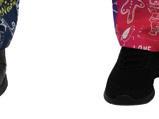








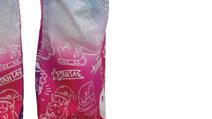



When I chose to become a registered nurse, I was certain my path would involve making positive changes and impacting the lives of the most vulnerable. What I didn’t anticipate was the biggest fight for change I’d face would be for my colleagues and the nursing profession.

For the past ten years, I’ve worked at Ramsay, a private healthcare provider that prides itself on ‘People Caring for People’ and ‘State of the Art Healthcare.’ However, after 18 months of negotiating for an enterprise agreement, it’s clear Ramsay doesn’t prioritise the wellbeing of its nurses and midwives. Now it’s our time to unite, stand up, and fight back.
Participating in an industrial action campaign against Ramsay Healthcare—the first of its kind—has been both empowering and daunting. Standing alongside my fellow nurses and midwives during a four-hour stop work rally was a powerful experience.
Together, we demonstrated our collective strength and highlighted the crucial role we play in healthcare. The realisation of our power to the extent of shutting down 17 operating theatres, made it clear just how essential we are to the daily operations of the hospital and the broader healthcare system.
Initially, the idea of speaking to the media was terrifying. I feared professional repercussions, saying something inaccurate, or being misunderstood. But seeing my colleagues rally alongside me in this protected industrial action gave me the courage to speak up on behalf of a resilient group of healthcare workers and be their voice.
I am incredibly proud to have been part of this groundbreaking industrial action campaign against Ramsay.
Carlie Morgan, CNS, Wollongong Private Hospital Branch

I am a Registered Nurse of 20 years. Like many others across the state, our small semi-rural hospital is in trouble. Located in the upper Blue Mountains, it is situated between Nepean and Lithgow hospitals, with 40 kilometres separating us in either direction.
Nepean Hospital is benefitting from the rolling out of ratios. While Lithgow, experiencing its own challenges, is more rural and its ED remains generally quieter.
At our hospital, staff are leaving to work where the conditions are far better. Why would you work in a hospital with no ratios, and where the NHPPD cannot be met? At times this year, upwards of 200 nursing hours per week have been lost due to unfulfilled vacancies, high sick leave, burn out and stress, or colleagues leaving altogether.
Recently, I, alongside three comrades from two different branches, met with our state member of parliament, Labor’s Trish Doyle.
Ms Doyle is a long-time ally of nurses and midwives, and our union generally. Ms Doyle knows our hospital well, and she has passionately campaigned both with us, and on our behalf inside the NSW Parliament.
We are grateful to have a state MP who knows why we desperately need this one-year, 15 per cent pay increase. We know this pay increase would reduce the number of burn out cases, see a rise in job satisfaction, and reduce waiting times for patients. This campaign is not just about pay, it will also see the delivery and quality of care improve.
A 15 per cent pay increase will help us deliver change for the better. There is still a way to go in this fight, and engaging your local MP is so crucial to help bring on the reform we need to see.
David Robson, RN, Blue Mountains District Hospital Branch
If

Meeting with your local politician might seem daunting, but it doesn’t need to be! It is important to remember that members of parliament are humans, and they need your vote! We need not be anxious or afraid to approach them, especially when public health nurses and midwives are fighting valiantly for a 15 per cent pay increase.
To anyone considering a trip to your local MP, here are my key tips to securing a successful dialogue:
1. Lock in a meeting
Email the state MP and request a meeting. Be sure to highlight what you want to discuss and list the names of the constituents who will join you.
2. Preparation
It is important at least one member of your team has the facts of your argument prepared before you meet. Always remember genuine stories are the most powerful tools at our disposal! Ask your volunteers to come prepared with lived experiences.
3. Meeting time
Warmly greet the MP and their staff. Allow the meeting to flow organically, and ensure each person has their voice heard. Before finalising the meeting, ask the MP for a firm commitment to:
• Publicly support the NSWNMA’s 15 per cent pay claim via their social media, and
• Write a letter to the Treasurer and Health Minister requesting our claims are granted.
4. Possible follow up
The MP may request more information during the meeting, make sure you provide this to them as soon as possible. After two weeks, follow up with an email to ask about the progress of their letter to the Treasurer. Accountability is key.
Ben Wright, RN, Hawkesbury District Health Service Branch
I’m an assistant in nursing from the Central West and have been working in aged care for 23 years.
Opal Bathurst started a new branch this year and I was elected as Secretary and a Delegate. This was at a time when the campaign for a new EBA was ramping up. From the correspondence we were getting through the union, I could see the offer was to say the least, poor.
In order to rally the troops across the board, I took the time to get to know what was on offer from Opal and through this, explained to everyone who asked what it meant for them.
I remained open and honest about what was on offer, and we had a strong vote for action and rejection of the original offer. This was an historic and momentous occasion for us. We won the right for protected action. This demonstrated to Opal that we were willing to stand up for better pay and conditions and fight for what we deserved.
The revised offer came through and I maintained my opposition to it. We were ready to fight!
Our strong opposition forced Opal to increase their offer minimally. Although not what we were hoping for, it demonstrated to Opal that as a collective group, we are a united front that will continue to fight for the pay, conditions and recognition we deserve, as well as fighting for what is best for our residents’ care.
Throughout this period, I learned from our industrial officers as well as other member leaders and am grateful for their guidance throughout the process.
Melissa Haysom, AIN, Bathurst Riverview Branch
It was loud and raucous with a lot of colour and movement but the message from thousands of members at a rally outside Chris Minns’ electoral office was clear and unequivocal: we deserve a 15 per cent pay rise.
Public sector nurses and midwives from across New South Wales held a 12.5 hour, and several 24 hour, strikes on 10 September, as our campaign for a 15 per cent, one-year pay rise ramped up.
As The Lamp goes to print a second strike is about to take place.
Fed up with being ignored by the government, thousands of NSWNMA members walked off the job throughout NSW.
Busloads of members from all the major Sydney metropolitan hospitals converged on the Premier’s Kogarah office to deliver a united message for change.
“Nurses and midwives campaigned hard for this government. This government offered the hope of change. They promised to value frontline and essential workers. And yet today we have been forced to the streets because this government has ignored us and taken us for granted,”
NSWNMA General Secretary Shaye Candish told the crowd.
“The state government is not bargaining in good faith. Not once in our 10 negotiation meetings has the government sat at the table and discussed nurses and midwives’ pay.”
Shaye said the government and Ministry of Health had been forthcoming on minor issues such as the right to a notice board but there was a deathly silence on substantive issues like pay and a right to have two days off.
Shaye said members were sick and tired of being undervalued, overworked, and not listened to.
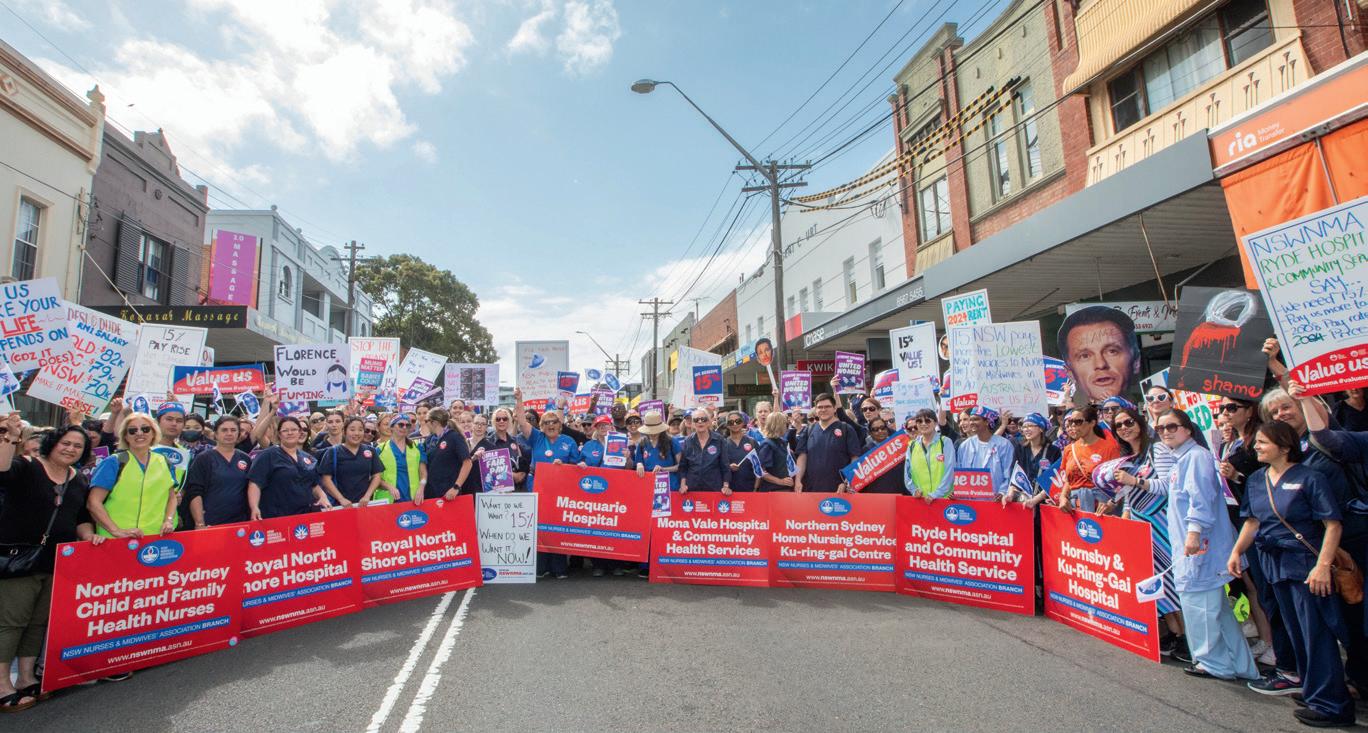
‘We have been forced to the streets because this government has ignored us and taken us for granted.’
— NSWNMA General Secretary Shaye Candish
She pointed out that the government had promised during the election to lift the wages cap and to reinvest productivity savings into wages.
“We found the productivity savings needed to pay for our pay increase in a business case prepared by prominent financial advisers, Deloitte. That analysis went through a validation process with government to confirm the efficiencies were real, and yet despite this, there is still no revised wage offer.”
According to Deloitte’s financial analysis, the state government has missed out on untapped Commonwealth revenue due to inaccurate hospital reporting. The report also highlighted widespread savings to be generated by reducing costs associated with staff turnover, overtime, agency staffing, and hospital acquired complications.
This increase in revenue and savings would cover the cost of implementing our 2024 claim.
“We did everything they asked for, jumped through every hoop and still no revised wage offer,” Shaye said.
She said the government had to face up to two particular challenges posed by low pay for NSW nurses and midwives – the attraction of other states with better pay and conditions and the gender pay gap.

“It’s clear the state government is choosing to pay nurses and midwives the lowest wages in the country, and it will continue to see our public health system fall apart if it doesn’t pay nurses and midwives enough to stay in NSW.”
“NSW Labor was elected on a platform of gender equity and supporting women in work. They’re now refusing to fix the gender pay gap and not deliver the state’s largest female-dominated workforce fair and reasonable pay.
“A workforce of 86 per cent females has its own unique gender-based challenges that is exacerbated by denying us two days off in a row!”
Shaye said the NSWNMA was asking “the women of this government to help and to stand up for us. We need these women to look at the stats, look at the data and demand their own government address the gender bias that keeps wages low and denies basic conditions for nurses and midwives." n
“We have to fix the pay rates now before we lose everyone”
The energy [outside the Premier’s office] was electric. We all felt really empowered seeing that everyone else felt the same way that we did. It made us feel that maybe there is a way to make a change if we all stood together.
I’ve got two jobs: I work full time at RNS and then I work one day a week at another practice – and that's only just covering the mortgage. My husband also has to pick up extra shifts where he can.
We’re mid-30s and we don't have any dependants and we're living pay cheque to pay cheque. If I had to recommend to a smart, capable 17-year-old what to do I would tell them to go to literally any other industry because they’re signing themselves up for financial hardship in nursing.
In our department in the last few months, we've had four people leave to other states.
We all love our job, we want to make a difference, but the government is almost leaving us no choice.”
At the moment, the health service can’t look out for their own, let alone the patients.
Olivia Stewart, RN, Royal North Shore Hospital Branch


“The staffing levels now are the hardest we’ve ever had”

At Campbelltown we have some of the highest rates of births in Sydney. We're just getting busier and busier. We are closing wards and relocating patient care to the birth centre because we just don't have the staff to function at the level that we need.
We are exhausted and we are just feeling extremely unappreciated.
I’ve been a midwife for 20 years and I think the staffing levels now are the hardest we’ve ever had.
I average two extra shifts a fortnight just to make ends meet. There are so many people that I spoke to over the last week who wanted to come and strike but they couldn’t afford not to work because they have to pay an electricity bill, or it would mean cutting children’s extracurricular activities like dancing or sports.
We have recently lost five staff with two of those going to Queensland. We have conversations at work about what else we could do, but our passion is midwifery. It is just very hard to stay in the profession when we're not getting paid enough to pay for bills and food.
At the moment, the health service can’t look out for their own, let alone the patients.
Belinda Renshaw, Midwife, Campbelltown Hospital Branch
“3 per cent a year for the next 3 years, it's like a slap in the face”
I think members will be keen to see this campaign through. People are angry and sick of being paid unfairly. I have been a nurse since the 1990s and I do think that nurses are really struggling to keep up with the cost of living pressures now. I know myself personally, as a single woman with a grown daughter who doesn’t live at home, I am struggling to pay my rent. I had to move when my rent increased from $680 a week to $840.
We feel we've been deceived by this government. We helped get them elected. I gave up two Sundays in a row of my own time to go and campaign to get this government elected because of the promises they made us. The government is talking about how they've taken away the 2.5 per cent wages caps, but what they are offering us, just 3 per cent a year for the next three years, it's like a slap in the face.

Rachel Young, RN, Royal Prince Alfred Hospital Branch

“Moving to Sydney meant I lost about $20,000 per year”
I only moved to Sydney two years ago from Melbourne. It is about 5 to 10 per cent cheaper to live in Melbourne compared to Sydney, but the pay in Melbourne is about 20 per cent higher. The Victorian government has initiated things for nurses, and they have better pay and ratios and other initiatives that make life a lot better.
We saw Chris Minns drinking coffee in our hospital coffee shop during the election period, promising that if he got into office, he would make changes. Everyone here at St George is just angry and frustrated waiting for that to happen.
A lot of my colleagues say they just want to provide the best patient care that we can, but they are all worried about having to make ends meet.
Glen Chua, Acting CNE, St George Hospital Branch

“I’m worse off now as an RN6 than when I was a new grad”
Our hospital branch is in Randwick, and it's a very, very expensive area to live in. Even staff who live an hour away are still struggling financially. I feel like I'm playing a game of bill roulette every time a bill comes in. The bill that got missed last month was the Internet bill and now my Internet bill is going up because I didn't pay it on time last month. A lot of my colleagues are facing the same issues.
I've been a nurse for 10 years, and it is getting worse. When I was an AIN, our wages were really poor. But with inflation, I feel like I'm worse off now as an RN6 than when I was a new grad and earning less per hour.
I frequently see male dominated industries getting improved pay when their wages are already much better than nurses and midwives. The only difference is nurses are essential workers who are 88 per cent female. It's glaringly obvious that this may actually be a gender pay issue. I hope the Minns government will honour our log of claims and pay nurses and midwives what we're actually worth.
With more and more members coming to every single action, our campaign is getting stronger.
Ally
Bleach, RN, Prince of Wales Hospital Branch


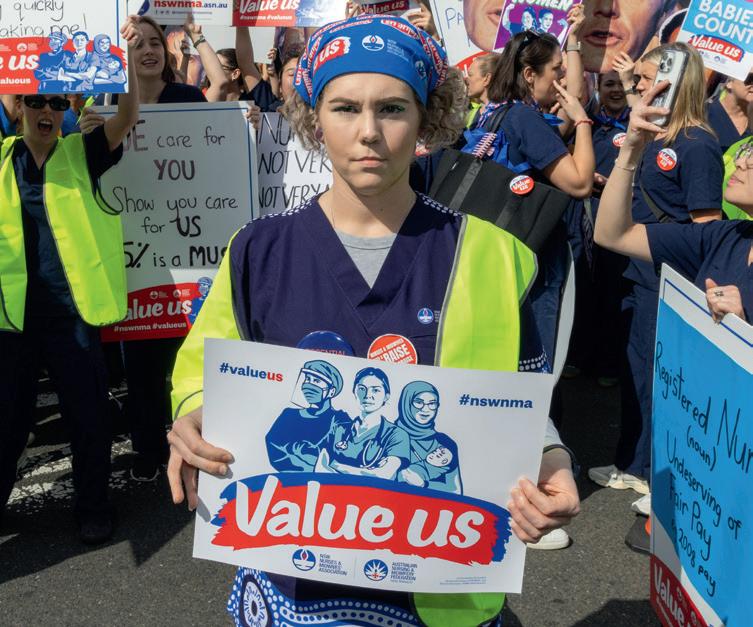
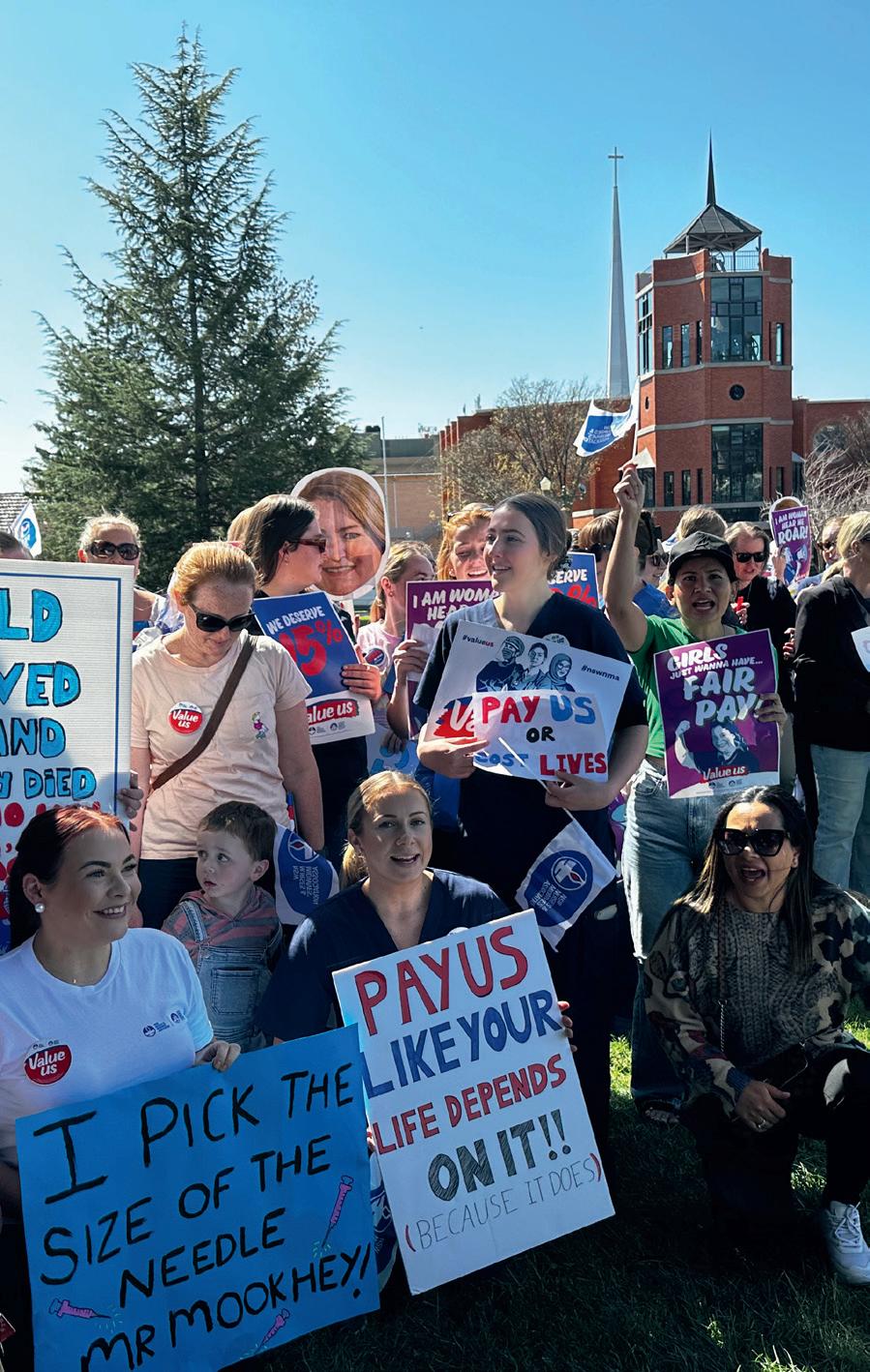

“If I didn’t have my extended family in Sydney, I would definitely move interstate.”
For a job where we see traumatic deaths and people in crisis and the worst days of their lives every day, it would be nice to see our pay reflect how important our job is.
I’m lucky: I have a partner with a good job, but we have a massive Sydney mortgage. We are having trouble saving, so my kids’ extracurricular activities are limited, and I budget very carefully with the groceries.
The younger ones at work are all having trouble buying houses. A lot of them are living at home in their mid 20s saving for a deposit. I have a friend who had a baby with her husband, and they can’t afford to move out of her husband’s parents’ house.

I’m glad we are taking action. If I didn’t have my extended family in Sydney, I would definitely move interstate. We are going to keep losing nurses to interstate until we become competitive.
Erin
Stevenson, RN, Liverpool Hospital Branch


Ramsay Health Care nurses in NSW hold historic work stoppages for higher wages and safer staffing.
Ramsay nurses and midwives across NSW have taken their first-ever strike action after voting against a substandard company offer for the second time.
Ramsay’s offer for a new enterprise agreement included pay rates below both cost-of-living increases and rates paid by Ramsay in Queensland.
78 per cent of Ramsay nurses voted in the ballot and 72 per cent of them voted ‘No’ to the company’s offer, which included a pay increase of 12.5 per cent over three years.
“The result sends a clear message to Ramsay that tinkering around won’t work – they need to listen and come up with an improved offer on pay and staffing,” said NSWNMA General Secretary Shaye Candish.

‘The result sends a clear message to Ramsay that tinkering around won’t work - they need to listen and come up with an improved offer on pay and staffing.’
— Shaye Candish
Industrial action has included strikes of up to four hours, bans on overtime and working during breaks, and bans on a wide range of non-clinical duties such as cleaning, making and pushing beds and some paperwork.
Industrial action in this bargaining period is regarded as ‘protected action’ by law.
“That means our members are entitled to take these actions without management taking, or threatening to take, any action against them,” Shaye said.
NSWNMA members have taken their case to the public and won widespread community support.
Speaking during a 4-hour strike at Ramsay’s Albury Wodonga Private Hospital in August, NSWNMA Branch President Renae Maher said staff were calling for an 18 per cent increase, along with better working conditions including improved nurse to patient ratios.
‘They will not come to the party on nurse-patient ratios or a decent pay offer.’ — Renae Maher
Ramsay nurses at three South Coast and Southern Highlands hospitals joined forces to hold an inspiring 4-hour strike and rally in Wollongong in August.
"For 16 months, this has been on the table, but Ramsay Health refuses to negotiate," Renae told ABC News.
"They will not come to the party on nurse-patient ratios or a decent pay offer.
"They're not interested in negotiating with the staff.”
She said the hospital was struggling to recruit nurses due to the pay gap between NSW, Queensland and Victoria.
"Why would you come to Albury when Ramsay Health Queensland nurses are paid up to 14 per cent more than us?" she asked.
The ABC noted concerns that Albury Wodonga Private Hospital would lose staff to the public sector, particularly across the border in Victoria.
In June, Victorian public sector nurses and midwives accepted the state government's offer of a 28.5 per cent wage increase across four years.
"If nothing changes, there will be a mass exodus," Renae said. n
Nurses from the region’s biggest private hospital, Wollongong Private (WPH), were joined by colleagues from Southern Highlands Private Hospital and Nowra Private Hospital. About 200 nurses marched through Wollongong with a police escort before rallying at a local park.
For WPH it was the second fourhour stoppage in support of a new agreement and forced the closure of all 17 operating theatres.
Theatre nurse Carlie Morgan, who is secretary of the NSWNMA branch at WPH, said members of the public cheered and voiced support for the nurses during the march.
“People came out of shops and told us we deserve a pay rise and better working conditions,” Carlie said.
“It was really rewarding to see that level of support from the community.”
Actions to continue
She said her branch would continue with strikes and other protected industrial action such as wearing union campaign badges, refusing to do overtime and refusing non-nursing duties such as pushing beds.
In the perioperative unit, for example, the ban on pushing beds has forced the company to roster more theatre assistants and orderlies.
Overtime bans have also had an impact – especially when the lists are running late.
“The theatre managers say, you can't put a patient to sleep after a certain time because the staff won’t stay back,” Carlie said.
She said the branch believes overtime bans are potentially very powerful but “many staff rely on overtime to make ends meet given the current cost of living crisis and the fact that we do not receive an acceptable level of pay”.
“Support for industrial action has increased over the course of the campaign and there's a real thirst for wanting to get out on strike again.
“We have also had great support from doctors and anaesthetists. They really value the nurses and they understand how hard we work to allow them to provide the services that they provide in the hospital.
“They want our contribution to be recognised and for us to feel valued."
More on Ramsay
See Branch Beat on page 26.n

‘Support for industrial action has increased over the course of the campaign and there's a real thirst for wanting to get out on strike again.’— Carlie Morgan (L)
The political and industrial environment we operate in has changed markedly and as our organisational capacity has grown, we are well placed to leverage the opportunities arising from these changes, NSWNMA
General Secretary Shaye Candish told Annual Conference.
Shaye said despite the undoubted progress the union still faces formidable challenges.
“We still have an incredible amount of work to do if we want to see a significant shift in the deeply ingrained injustices our nursing and midwifery professions face every day.”
She said there have been significant changes to industrial law at the federal and state levels that have created a more level playing field.
“We are finally starting to see the pendulum swing back in favour of workers.
“These changes were called for by the union movement and they give better rights to delegates, more opportunities to organise collectively for enterprise agreements and new options for workers in community interest sectors like healthcare and aged care.”
In NSW, changes to the Industrial Relations Commission mean that there will be a system that offers conciliation and arbitration and opportunities to specifically explore the impact of gender, and recruitment and retention when considering pay and conditions.
“As I see it, the challenge for unions now, is to leverage these new opportunities to advance the interest of workers, specifically, for nurses and midwives,” she said.
There has been a transformation within the union too with an increased emphasis on organising.
“This type of organising is methodical, and systematic. This is what it truly takes to win, especially to win the type of improvements you

all deserve. And we are starting to see the emergence of this approach coming to life in our campaigns,” Shaye said.
“We are setting pay ambitions campaign by campaign, that focus on pay parity with other states, or other employers, gender equity and the impact of historical undervaluing.
“In collaboration with the ANMF and our other sister branches we have filed our next work value case to address the historic undervaluing of care work as it relates to the Nurses Award.
“As always, there is more to do, but our recent gains on pay are significant and we are determined to ensure you are paid what you’re worth – we need to see wages that value, respect and reflect the work you do.”
Shaye said the union was focussed on campaigns for ratios across the Public Health System and private hospitals, pushing for clauses in enterprise agreements and awards that ensure compliance, with the aim of having organised members capable of enforcing conditions.
“In aged care, RN 24/7 is finally being realised after years of campaigning by this union.
“Care minutes have also commenced in aged care facilities ensuring minimum staffing levels, thanks to our campaigning. There remains work to do on this to ensure compliance and transparency.
“And we are pushing for care minutes clauses in enterprise agreements, or clauses that reflect care minutes as a ratio instead.”
‘What we need to do now is turn our incredible growth and numbers into activism which is how we make our voice heard.’
— NSWNMA General Secretary Shaye Candish
Over the past year, the union’s membership has grown by 3.5 per cent and is now just shy of 80,000 members.
“What we need to do now is turn our incredible growth and numbers into activism which is how we make our voice heard,” she said.
As well as campaigning for improved workplace conditions the union has been active in several areas of social justice including housing, the environment, closing the gap and addressing student poverty.
“The challenge for us is to ensure that we have members engaged at scale. We need to be bold and brave; we have to take risks, and we have to do things we haven’t been willing to do before. We have to be methodical in growing our power.” n


Ratios will not be met if there is not movement on wages, Assistant General Secretary Michael Whaites told Annual Conference.
Michael said that in our fight for improved wages and working conditions in the Public Health System, “the last 12 months have been nothing short of frustrating”.
“The implementation of ratios has been slower than we need. We continue to push the Ministry of Health at every opportunity for transparency, accountability and enforceability, and frustratingly the Ministry continues to resist. Our patience on this protracted process is nearing its end.”
‘We continue to push the Ministry of Health at every opportunity for transparency, accountability and enforceability’
— Assistant General Secretary Michael Whaites
“On a positive note, we have seen four EDs begin converting to ratios. These are changes that will improve the working lives of ED nurses.”
Pay and the implementation of ratios are connected, he says.
“It is clear that the government’s agenda of introducing safe staffing levels, of introducing ratios, will not be met unless they meet our demands on wages.”
“We put to government a plan for increased federal funding and identified savings through our Rapid Business Case - enough to deliver a 15 per cent pay rise.”
In NSW, since the introduction of the Liberal Party’s wages policy, there has been a 10 per cent decrease in the number of senior midwives across NSW.
After a decade of neglect by state and federal governments, “this is a trend Federal and State Labor must reverse”.
He said the ANMF had been advocating for midwifery-led models of care and greater autonomy. The NSWNMA was calling for greater recognition of the work midwives do through improved pay and conditions.
Michael said a key barrier to recruitment and retention of midwives and nurses was housing accessibility and affordability and the union was campaigning for policies that would allow essential workers to live closer to work with greater security.n

Men and women want respect, security and the ability to manage work and care – but are they getting it?
Australian men are better paid than women even though women have higher education qualifications and “higher rates of skills attainment,” NSWNMA’s annual conference heard.
University of Sydney Professor Rae Cooper AO said women work fewer paid hours than men “partly because they do many more hours of unpaid work at home”.
However, “men's wages are higher than women's wages even when we control for things such as the fact that women work tend to work shorter hours and men to tend to work longer hours,” she said.
Prof Cooper, who is founding director of the Australian Centre for Gender Equality and Inclusion at Work, said nursing was “a very feminised sector” of the labour market which is “highly undervalued in terms of the wages that you're paid and in terms of the quality of the work that you undertake – regardless of the enormous social and economic importance of the work that you perform”.
“If you ask me what the biggest problem is – where is the area we should be concentrating most of our effort – it would be about trying to lift the wages and the job quality in the areas that are highly feminised professions and highly feminised labour markets.”
She described job security as “a really feminised issue in the labour market”.
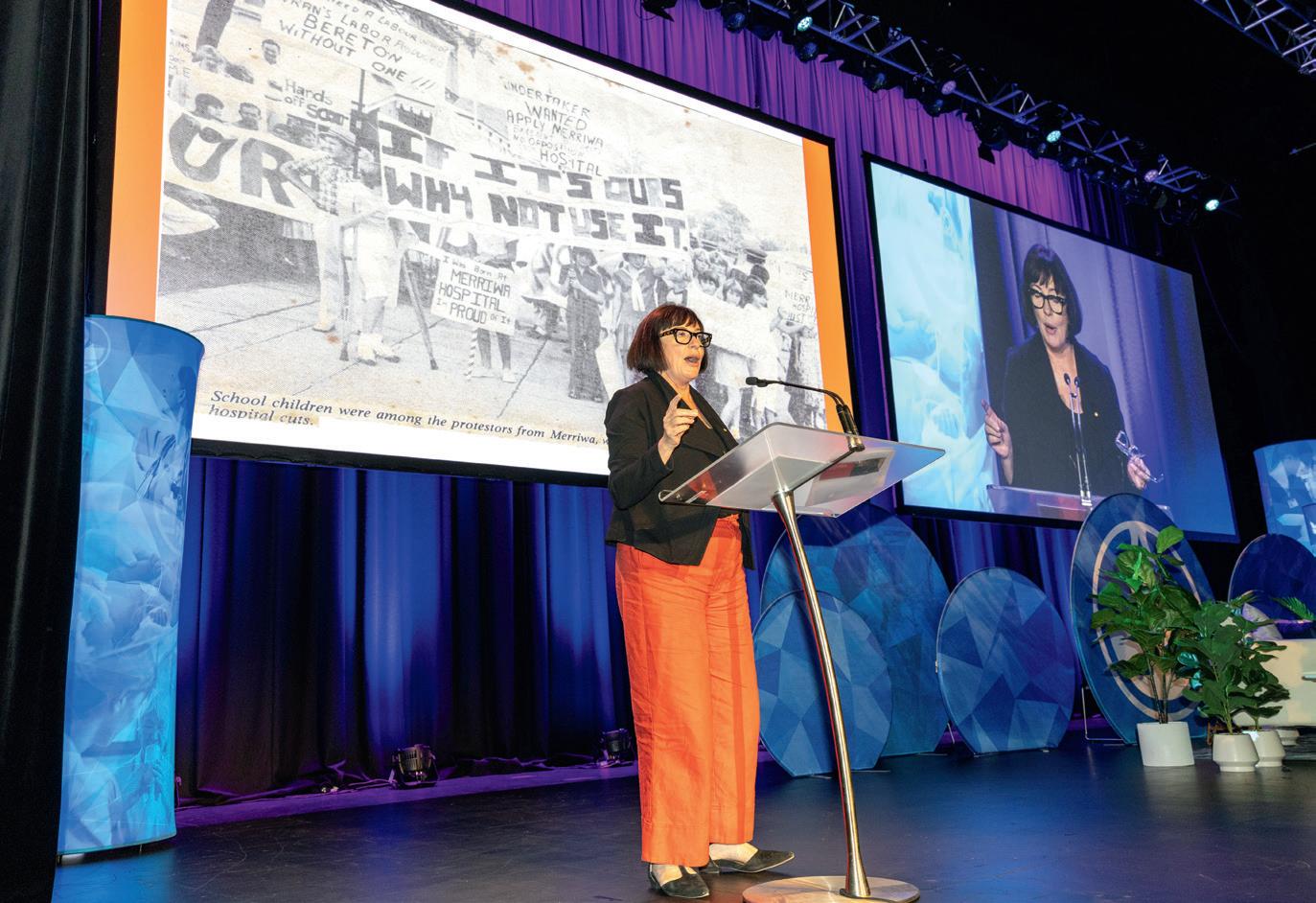
‘PRECARIOUS WORK IS WOMEN’S WORK’
“Precarious work is women's work primarily. The majority of people who work on casual contracts or short-term contracts are women.
“That has an impact not just in terms of the money they paid per hour that they're working, it also has an impact on the extent to which they are invested in by their employers, their value and whether they have a career path.”
Prof Cooper said that during 25 years of research into gender segregation in the labour market she had seen gender issues become mainstream issues.
“I think one of the reasons it has become quite a central issue when we talk about work/job quality and the nature of careers is because of the great advocacy of unions like the Nurses and Midwives.”
She said gender equality at work was a union issue and an issue in bargaining.
“It completely is an issue in public policy and it should be an issue that governments are looking at in terms of their programs and their expenditures in their budgets.”
‘If you ask me what the biggest problem is – where is the area we should be concentrating most of our effort – it would be about trying to lift the wages and the job quality in the areas that are highly feminised professions and highly feminised labour markets.’
— Professor Rae Cooper AO

She said that in a national survey last year, her centre asked workers under 40 to identify the features of work that would allow them to flourish in their careers.
The top three features identified by both women and men were “A job in which I am treated with respect”, “a secure job” and “a job where I can manage my work and care”.
The survey showed women and men were achieving their aspirations in almost identical proportions.
However, women had higher expectations and therefore failed to meet their goals at a higher rate.
For example, 92 per cent of women and 88 per cent of men said they wanted “a job in which I am treated with respect”.
Only 76 per cent of women and 77 per cent of men said they had such a job.
Prof Cooper said it was very disturbing that only three quarters of people said they were treated with respect in their workplace.
On job security, 91 per cent of women and 87 per cent of men said they wanted a secure job but only 73 per cent of women and 72 per cent of men had such a job.
The ability to manage work and care revealed the biggest gap between women and men in terms of what they aspire to and what they currently have.
Among survey respondents, 89 per cent of women and 85 per cent of men said they wanted a job that allowed them to manage work and care.
Only 36 per cent of women and 37 per cent of men had achieved that.
In other words, 53 per cent of women and 48 per cent of men had jobs which prevented them from
achieving their goal of being able to manage both work and care.
Prof Cooper said the survey also reflected “a rising interest from men around wanting to be able to find ways that they can balance their working lives and their caring lives”. She said meeting these needs should not been seen as a cost.
“We should be looking at it as an investment in terms of finding ways to boost participation for women, finding ways … to participate in high quality jobs where they are engaged and they want to stay, and having women being able to work more hours in the types of jobs that they want to work in.” n
Continuity of care by well-trained and well-remunerated midwives in midwifery group practices leads to the best birthing experiences and health outcomes for women and babies, according to Hannah Dahlen AM, Professor of Midwifery at Western Sydney University.
Speaking to the Association’s annual conference, Professor Dahlen said New South Wales, with the lowest number of midwives per 100,000 head of the population in Australia – 104.3 midwives compared to average of 124.9 Australia wide – is struggling to keep up with other states and territories.
“So, if you think you're tired, if you think you're overworked, you are, ” Professor Dahlen said.
“In every country where midwifery as a profession is strong, the outcomes are better. They're better for the babies, they're better for the mothers. They're better for costs and they're better for quality.”
Professor Dahlen, who has been a midwife for 30 years, cited the World Health Organization’s push for investing in the midwifery workforce because a strong midwifery workforce leads to drastically reduced deaths and improved health outcomes across a range of measures. A well-resourced midwifery workforce is “a cost-effective investment, but there's a startling lack of investment in midwifery, and now is the time to take collective action,” said Professor Dahlen.
“Midwives cannot give quality care when they're running from woman to woman, room to room.”
NSW is also lagging behind most other states and territories on the
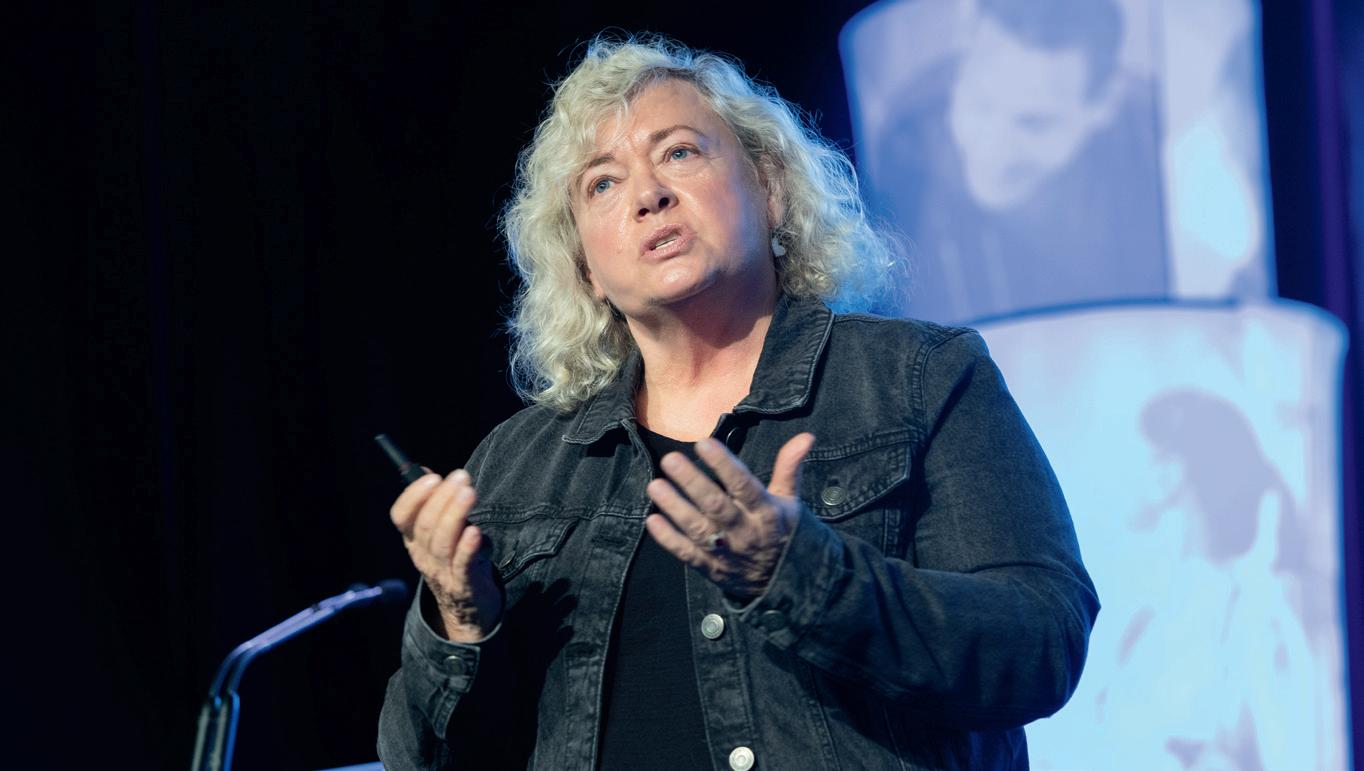
‘We need to “imagine a maternity service where women were at the centre of every decision.’
— Prof Hannah Dahlen AM
model of care that leads to the best outcomes, the midwifery group practice (MGP). Research shows that women who have continuity of midwifery care are less likely to have caesareans, instrumental births and episiotomies, and are more likely to have a spontaneous, vaginal birth and a positive experience during labour and birth.
While the 14 per cent of births occur in MGPs Australia-wide, in New South Wales the figure is 10.9 per cent of midwifery care.
“The most common model of care in Australia is public maternity hospital care, which is fragmented care, followed by shared care with the GP, followed by midwifery group practice caseload care,” Professor Dahlen said.
To make matters worse, a 2019 study of the midwifery workforce found that 42.8 per cent of Australian midwives had considered leaving the profession, or intended to leave, in the previous six months.
“Early career midwives, which are the ones we really need to keep, were the ones most likely to want to leave the profession. And almost half the midwives who considered leaving the profession were most dissatisfied with their managers.”
It is not surprising the NSW Parliament recently conducted a birth trauma inquiry in NSW, with some 28 per cent of women in New South Wales giving birth experiencing trauma, Professor Dahlen said.
In her submission to the public inquiry - one of over 4000 submissions - Professor Dahlen told Parliament the hearings “were a #MeToo moment for mothers”.
She said the lowest rates of birth trauma, mistreatment and obstetric violence occur when mothers are cared for by “privately practicing midwives, followed by midwifery group practice, followed by private OB care, and then the fragmented care [of GPs and hospital care]”.
“What this shows is relationships matter, and midwife relationships matter the most. This is a huge endorsement for our care.”
Two of the top recommendations of the report that has come out of the New South Wales Parliament birth inquiry are ensuring that all women have access to continuity of care model, and expanding midwifery services, especially in regional, rural and remote New South Wales.
In addition, we must close the gap in outcomes for Aboriginal women, Professor Dahlen said. “If you look at the birthing on country services…where you had continuity of midwifery care, culturally appropriate services and culturally sensitive models, women were more likely to attend antenatal visits, were nearly 40 per cent less likely to have a preterm birth, and they were more likely to exclusively breastfeed on discharge.”
Professor Dahlen cited recent work surveying 669 members of the MGP midwifery workforce, which found midwives are resigning because of poor work conditions and how the service was managed. Managers, meanwhile, resigned because of the role changes, conflict with their upper managers, limited support, heavy workloads, competing demands and burnout.
“Relationships with women in this survey were absolutely one of the major motivators for midwives. They loved the work. However, worklife imbalance is a deterrent, and it's exacerbated when you have staffing shortages.”
“We’ve got to stop counting mothers and babies as one. We all know they're one, but they are not one in workload.”
Better remuneration, improved orientation, and attracting new graduates and students to MGPs also need to be addressed.
We need to “imagine a maternity service where women were at the centre of every decision,” Professor Dahlen said. “A service where midwives would be the number one people, along with you wonderful nurses, that would be protected, promoted and supported.” n
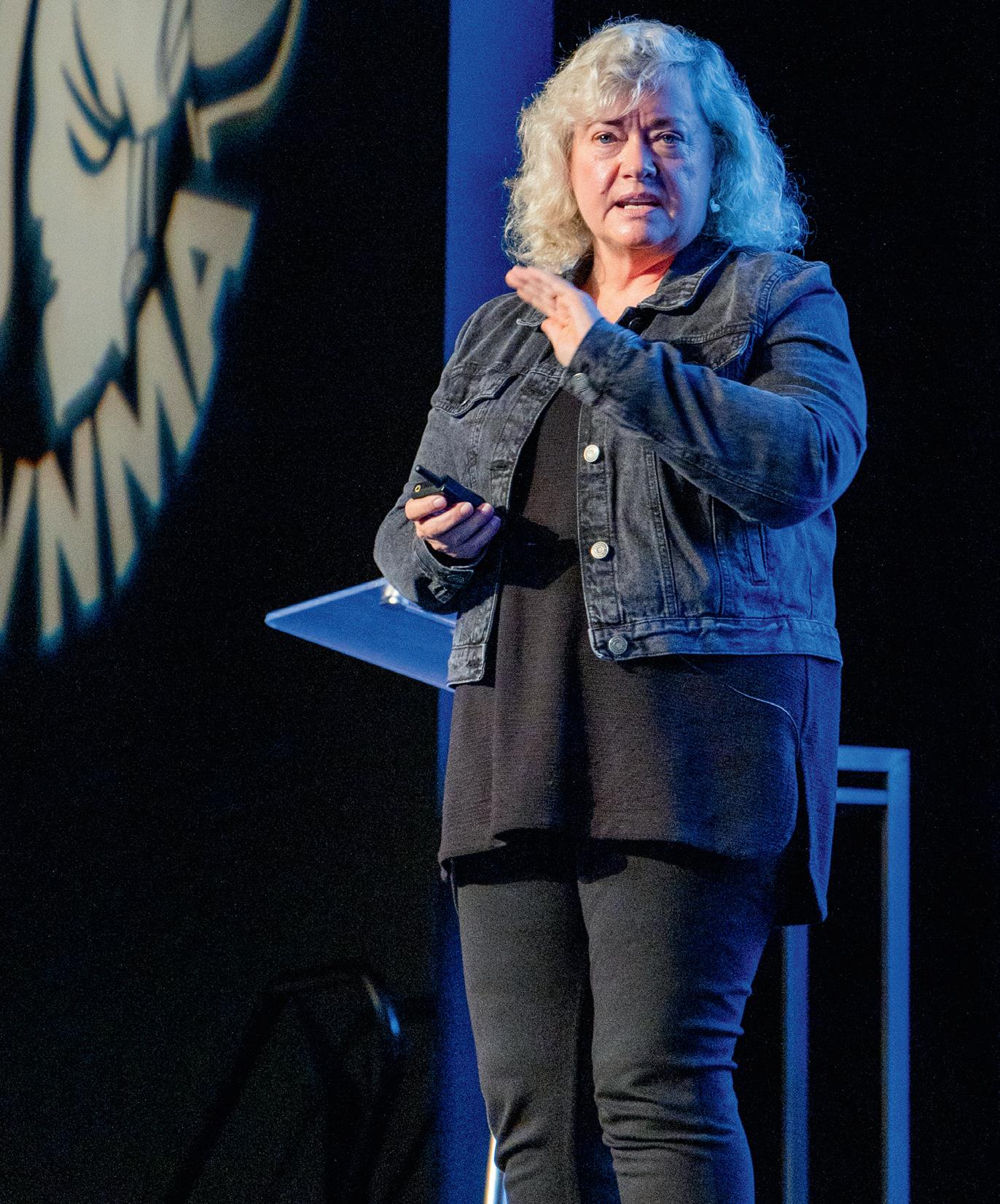
NSWNMA members at Opal aged care facilities have won an improved pay increase, more sick leave and an agreement to ensure the company complies with its care minutes obligations.
Opal HealthCare is Australia’s biggest for-profit aged care provider with 47 nursing homes across NSW.
The company initially offered an 8.25 per cent pay increase over three years as part of a new enterprise agreement (EA).
Opal employees rejected the offer following a ‘Vote No’ campaign led by the NSWNMA, which argued for a pay increase above inflation.
It was the first time Opal nurses and carers had voted down a companyproposed EA.
The ‘No’ vote was followed by another first, when NSWNMA members voted 92 per cent in favour of taking industrial action for a better deal.
Industrial action did not go ahead because employees voted to accept an improved offer from the company. The offer included:
• Pay increases over three years totalling 9.75 per cent for registered and enrolled nurses, and up to 10.2 per cent for assistants in nursing
• Three days paid infectious disease leave
• Insertion of a care minutes clause in the EA and compliance with care minutes to be written into the existing Standard Roster and Workloads Management clauses.
‘COURAGEOUS ACTION’ LED TO IMPROVEMENTS
NSWNMA General Secretary Shaye Candish said members ran a strong campaign that achieved a lot more than the company wanted to give them.
“It was courageous member action, and strong leadership by your union

bargaining team, that put pressure on Opal to make improvements following the first vote,” Shaye said.
She described the care minutes clause as a significant win.
“Understaffing and care minutes have been a key issue for our members throughout this campaign,” she said.
“Getting the mandatory care minutes written into the EA will help our members to ensure that the employer sticks to them.
“The NSWNMA achieved 30 per cent membership growth and built 10 new branches through this campaign, which puts our members in a good position to tackle these issues.”
Umesh Humagain, NSWNMA delegate at Wallarah Point Care Community on the Central Coast, said Opal was holding back more than 12 months backpay when employees voted to accept the company’s improved offer.
Umesh said many workers mistakenly believed they would miss out on back pay if the company offer was voted down.
“Most people are going through a cost-of-living crisis and they took the view that something is better than nothing,” he said.
‘This is not the end of our campaign; it is just the beginning.’
— NSWNMA delegate Umesh Humagain
He said members are concerned that non-nursing duties such as catering are being counted when calculating the mandatory 200 minutes of direct care per resident per day.
“Aged care providers need to have enough staff to meet the 200 care minutes and that is easier for us to enforce when it is written into the EA.
“That can be our next campaign focus.
“We are chronically understaffed and the residents deserve a deserve better level of care than what they are getting.
“This is not the end of our campaign; it is just the beginning.”
Umesh said several new members joined the NSWNMA at his facility during the campaign.
“I explained to them it is much more effective if we speak to management as a group, rather than as individuals,” he said.
“Management should not consider the union to be an opponent.
“Our motive is delivering quality care and if management has the same aim, let’s work together.” n
Have you recently moved house? changed jobs or classification? updated your email?



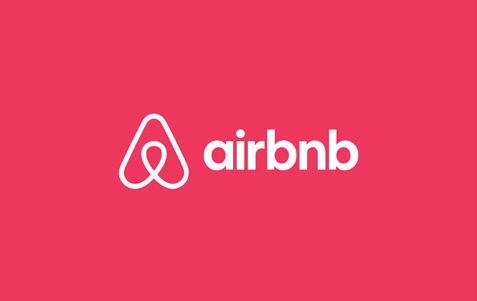


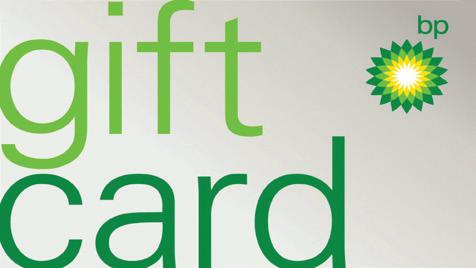
Update your details using our online portal during 1 April 2024 - 30 March 2025 and you will automatically be entered in the draw to win.
We are giving away two gift card bundles, each prize valued at $350.
Winner may choose one gift card valued at $350 or a selection* of gift cards to the value of $350.




1 Scan or go to nswnma.info/mc
2 Update your details
3 Go into the draw to WIN one of two gift card bundles
* Up to a maximum of three different gift cards, to the total value of $350 per prize. **Winner must be a financial member of the NSWNMA. The Association will contact winners, ascertaining preferred gift cards. Gift cards are subject to availability and supplier t&c’s apply.
Keeping your membership details up to date is very important. If you’re a dualqualified nurse/midwife, you can now update your role at nswnma.info/mc






The Lions Nurses’ Scholarships open on 1 August and close on 31 October each year
The Lions Nurses’ Scholarships open on 1 August and close on 31 October each year
The trustees of the Lions Nurses’ Scholarship Foundation invite applications for scholarships. Nurses eligible for these scholarships must be resident and employed within the State of NSW or ACT.
The trustees of the Lions Nurses’ Scholarship Foundation invite applications for scholarships. Nurses eligible for these scholarships must be resident and employed within the State of NSW or ACT.
You must currently be registered with the Nursing and Midwifery Board of Australia and working within the nursing profession in NSW or the ACT, and must have a minimum of three years’ experience in the nursing profession –the last 12 months of which must have been spent in NSW or the ACT.
You must currently be registered with the Nursing and Midwifery Board of Australia and working within the nursing profession in NSW or the ACT, and must have a minimum of three years’ experience in the nursing profession –the last 12 months of which must have been spent in NSW or the ACT.
Details of eligibility and the scholarships available (which include study projects either within Australia or overseas), and application forms are available from: www.nswnma.asn.au/education
Details of eligibility and the scholarships available (which include study projects either within Australia or overseas), and application forms are available from: www.nswnma.asn.au/education
Administration Liaison, Lions Nurses’ Scholarship Foundation
Administration Liaison, Lions Nurses’ Scholarship Foundation
50 O’Dea Avenue Waterloo NSW 2017 or contact Matt West on 1300 367 962 or education@nswnma.asn.au
50 O’Dea Avenue Waterloo NSW 2017 or contact Matt West on 1300 367 962 or education@nswnma.asn.au
COMPLETED APPLICATIONS MUST BE IN THE HANDS OF THE SECRETARY NO LATER THAN 31 OCTOBER
APPLICATIONS MUST BE IN THE HANDS OF THE SECRETARY NO LATER THAN 31 OCTOBER
Check out NSWNMA merchandise at Member Central, sold at cost to members




The NSWNMA’s 2024 annual conference declared its opposition to the state’s controversial anti-protest laws.
Annual conference delegates called on the NSWNMA to join other unions and community groups in pressuring the state government to repeal anti-protest laws recently used against peaceful protestors demanding a ceasefire in Gaza.
A conference resolution said, “Union members and officials who are standing up against genocide are being targeted by police violence and by draconian anti-protest laws, which impinge on their civic duty, and which the NSW state government has the power to repeal.”
“The existence of laws that impinge on the right to protest is causing increased and undue scrutiny of, and also risks to, NSWNMA members’ professional registration when they partake in protest.”
The resolution followed the arrest of 19 people including two NSWNMA members at Sydney’s Port Botany in March.
They were protesting against the arrival of an Israeli ship of the Zim line, which is believed to transport weapons to Israel and is the target of international maritime union action.
The arrested NSWNMA members were charged with disruption to a major facility and failing to comply with a police direction.
They faced up to two years’ imprisonment and fines of up to $22,000 but eventually received a six-month good behaviour bond with no conviction recorded.
Also at the Port Botany protest were members of the Maritime Workers Union, Teachers Federation, Australian Services Union and Public Service Association.
Speaking at annual conference, NSWNMA Assistant Secretary Michael Whaites said, “We continue to work with progressive unions in overturning the anti-protest
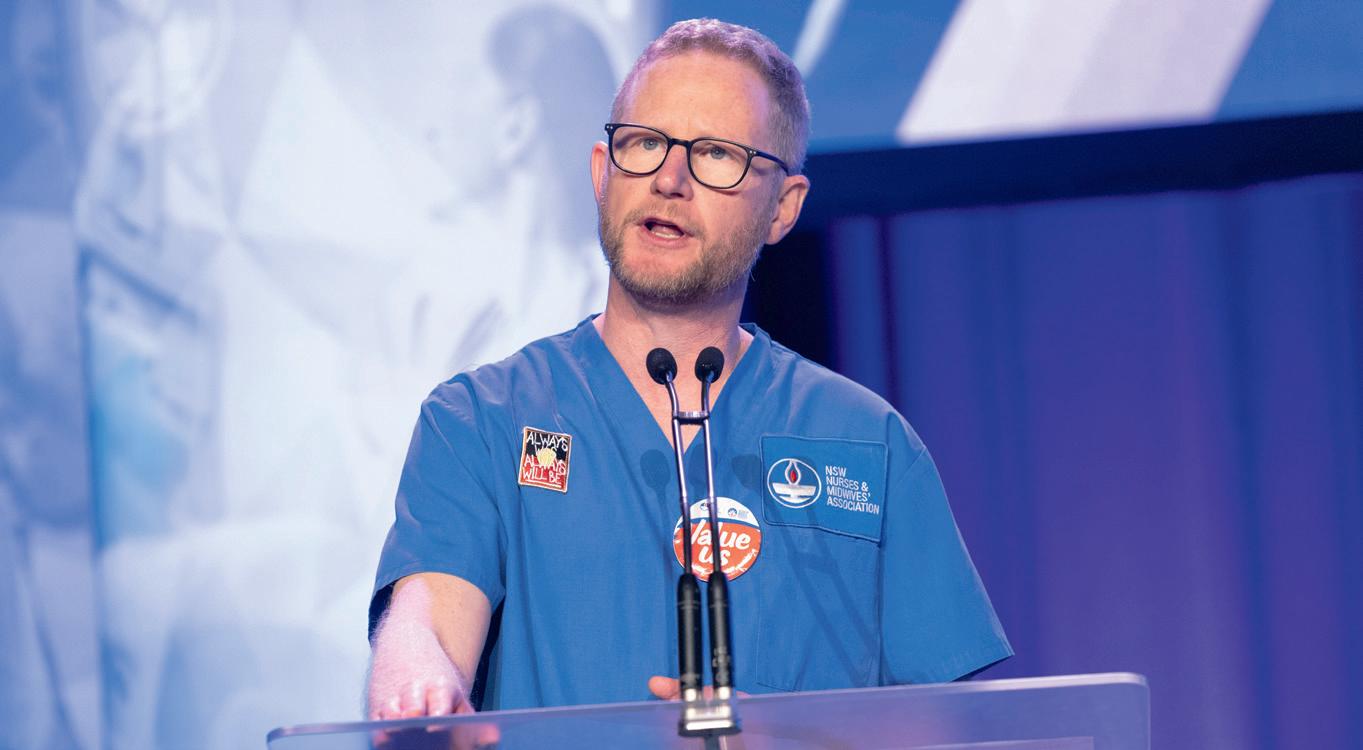
‘We continue to work with progressive unions in overturning the anti-protest laws that were introduced by the Liberals, and that were sadly supported by Labor.’
— Assistant General Secretary Michael Whaites
laws that were introduced by the Liberals, and that were sadly supported by Labor.”
Following a NSW Supreme Court ruling that parts of the laws were unconstitutional, the state government launched a review of the remaining laws and the NSWNMA made submissions to the review.
Our submissions pointed out that the NSWNMA has a long-standing commitment to many social justice movements and the right to peaceful protest and peaceful assembly has been “the cornerstone of many victories for working people.”
“It is an important role of the union movement to be vigilant about government power being used to silence healthy dissent,” the submission said.
“Part 4AF of the Crimes Act 1900 fails to uphold the right of NSW citizens to peacefully protest. The NSW Supreme Court has already found that parts of the law are constitutionally invalid, and this should serve as an indicator that the law goes too far.”
Political observers say the government of Premier Chris Minns, who praised the police conduct at the Port Botany protest, is unlikely to agree to any change of the law.
NSWNMA members at the protest were particularly motivated by the appalling casualties suffered by Gaza healthcare personnel.
In June, the UN Human Rights Office denounced the reported killing of 500 health workers in Gaza since 7 October 2023, against the backdrop of Israel’s “systematic” attacks on hospitals and other medical facilities in violation of the laws of war. n

Branch Beat with NSWNMA Assistant General Secretary Michael Whaites
Ramsay Health Care’s Southern Highlands Private Hospital (SHPH) in Bowral is a small facility with five theatres, one ward and a cancer centre. Its nurses have taken part in both regional and local strikes in support of a new Ramsay enterprise agreement.
Ramsay is one of the world’s biggest private healthcare companies but has so far failed to make a fair offer of higher wages and safer staffing that recognises the true value of its nurses and midwives.
In August, SHPH members joined other Ramsay nurses from Nowra Private Hospital and the much-bigger Wollongong Private Hospital (WPH) in a fourhour strike and public rally at Wollongong’s MacCabe Park.
Branch leaders from all three hospitals say they achieved a greater impact by joining forces.
Their combined rally and march got a police escort through the streets of Wollongong and front-page coverage in the Illawarra Mercury.
They showed Ramsay and the people of the South Coast and Southern Highlands region they are determined to get a fair deal.
About 30 nurses walked out of Southern Highlands Private Hospital (SHPH) in Bowral and drove down to Wollongong for the combined Ramsay nurses march and rally in August.
“It was a great result,” said the NSWNMA branch secretary at SHPH, theatre nurse Ewan Gemmell.
“It showed Ramsay we want them to make a better wage offer and introduce a ratios/safe staffing model that will help address frequent frustrations about inadequate staffing levels across all Ramsay sites.”
SHPH branch has also held one-hour local stoppages “to maintain the momentum of the campaign and keep it in the public eye,” Ewan said.
“By far the most effective action for us is to walk out because walkouts are hard for the company to work around.”
Ewan was the driving force for the establishment of SHPH’s first ever NSWNMA branch in 2023.
He decided to try to set up a branch after attending an “informative and very helpful” training course for NSWNMA activists.
He then gathered the 10 membersignatures needed to gain union approval for a branch.
“A lot of members thought that having the branch was a good idea but very few wanted to get involved as branch officials,” Ewan said.
“Some were afraid of being targeted by management if they had anything to do with the union. Bowral is quite a conservative area and I had my doubts as well.
“However, I have not had any problems in communicating with the CEO and the director of clinical
services. We disagree on issues but I have never felt disrespected or intimidated by them in the pursuit of my role as NSWNMA rep.”
The NSWNMA and Ramsay started negotiations for a new enterprise agreement in 2023.
Ewan said nurses became angry that Ramsay was dragging out the negotiations and offering a wage deal that failed to keep up with costof-living pressures.
“Ramsay’s offer showed no real respect or recognition for the work nurses do, especially during COVID.
“For many nurses this was a catalyst to join the NSWNMA and begin the fight for a better deal.
“Once it became clear that we were going to start industrial action, members wanted to get more involved in branch activity.
“About 10 people turned up to our branch meeting last week, which was fantastic for a small hospital like ours.”

‘Ramsay’s offer showed no real respect or recognition for the work nurses do, especially during COVID.’
—
Ewan Gemmell, Southern Highlands Private Hospital Branch
Ewan said he had been surprised and heartened by the support he received from nursing colleagues –both union and non-union.
“When I started walking around the ward and talking to people about the EA, a couple of nurses who I didn’t know came up to me, gave me a hug and said ‘good on you’.
“That sort of response makes it worthwhile and shows the branch is meeting a need.
“Having union representation at a local level helps gives nurses a voice when so often they feel they are not taken into consideration – especially in the private healthcare system.”
Ewan’s fellow branch official is President Katie Nicholas who works part-time. Other members step in to ensure the branch continues to function when they are absent from the hospital.
“People who I totally didn't expect have stepped up and offered to do stuff such as communicating with members and management,” Ewan said. n
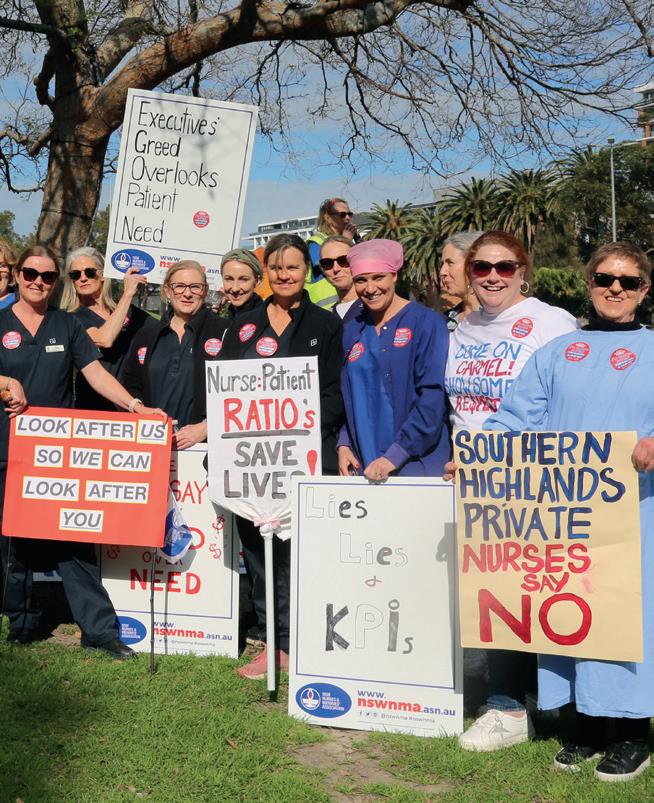
MEMBERS FROM SOUTHERN HIGHLANDS PRIVATE HOSPITAL BRANCH
Carlie Morgan, secretary of the NSWNMA branch at Wollongong Private Hospital (WPH), said the three regional Ramsay branches worked together to achieve maximum impact.
“We’ve got a strong branch at WPH and we got a good turnout for our first rally,” she said.
“For our second stoppage we wanted to show solidarity with our colleagues from smaller facilities in the region.
“Having a combined rally also allowed us to put faces to names and get to know colleagues who are fighting for the same outcomes.”
The NSWNMA branch at WPH conducted a poll to gauge the number of WPH theatre, recovery and day surgery nurses who intended to strike in August.
“The poll result showed that the strike would require the theatres to be shut down,” Branch Secretary Carlie Morgan said.
“We picked a day which would have the greatest financial impact and flow-on impact to the hospital and made sure the same strike day would work for the nurses at the other two hospitals.
“We then notified our hospital executive that we would be stopping and that they would have to close the theatres.”
During the campaign, Carlie and branch president Nerida Anthony made short videos to get messages out to members.
“We put out a poll asking members if they preferred videos, or written information, or both, and we received the highest response for ‘both’.”n

‘Having a combined rally also allowed us to put faces to names and get to know colleagues who are fighting for the same outcomes.’
— Carlie Morgan –
Wollongong
Private
Hospital Branch

I have been working in the public health sector for a few years. My NUM is looking at introducing 12-hour shifts in our department. I am a single mum, and 12-hour shifts would not be suitable for me and my family. Can I be forced to work 12-hour shifts?
No. You can choose to not be part of the 12-hour system. Your employer is required to have alternative shifts for you and others who opt out of it under Clause 5, (v)(a) Pilot Roster Projects of the Public Health System Nurses’ and Midwives’ (State) Award 2023:
Participation in a 12-hour shift system will be voluntary. Alternative shift provisions must remain available for staff who do not agree to participate in a 12-hour shift system.
I work as a Registered Nurse for an Affiliated Health Organisation. I thought I was paid under the Public Health System Nurses’ and Midwives’ (State) Award, but I’ve been told that this is not correct and that I’m in the federal industrial relations system. Can you tell me what this means?
If you are employed by an Affiliated Health Organisation (AHO) you are in the federal industrial relations system. However, AHOs are recognised as part of the New South Wales public health system and, as a result, the nurses and midwives they employ must as far as possible be remunerated in accordance with the Public Health System Nurses’ and Midwives (State) Award (the PHS Award). The Association has negotiated an enterprise agreement with AHOs which is designed, to the extent possible, to mirror the PHS Award. It is worth remembering that if the PHS Award changes, those changes should flow on to nurses and midwives working for AHOs.
When it comes to your rights and entitlements at work, NSWNMA General Secretary Shaye Candish has the answers.
I am employed on a permanent part-time basis at a Healthscope facility. I regularly work more than my contracted hours. Can my contract be changed to reflect the hours that I work?
Yes. Clause 24(xi) of the Healthscope – NSWNMA/ANMD – NSW Nurses’ and Midwives’ – Enterprise Agreement 20202024 provides that a part-time employee can request that their hours be reviewed annually. Where the employee is regularly working more than their contracted hours, it may be agreed that the contracted hours will be adjusted to reflect the hours regularly worked. However, adjustments to contracted hours will not be made in circumstances where the additional hours are being worked to replace other staff who are absent on leave or are the result of a temporary increase in hours – for example, for the specific needs of a patient.
I work in a public hospital, and I have heard that there is a restructure occurring in my department and I will now be reporting to a different manager. I have not received any formal communication with regards to this. Does the LHD need to inform me about a restructure?
Generally, yes. Under clause 6(a) of the Public Health System Nurses’ and Midwives’ (State) Award employees must be notified of changes which are likely to have a significant effect upon them. This includes a restructure and a change in reporting lines. Not only is an employer required to notify, they must also consult with the Association and affected employees, and give an opportunity to provide feedback for consideration.
I’m currently working in a public hospital in NSW, and I have 10 weeks of annual leave accrued including 2 weeks prorata. I want to resign and go to work in the private sector, and want to know if I will be paid annual leave loading on my 10 weeks of annual leave when I receive it as a lump-sum payout on termination?
Payments for pro-rata annual leave and lump-sum payouts on termination do not attract a payment for annual leave loading, however you can claim the loading on a lump-sum payment if you are retiring. Please refer to Clause 2.11.1 (6) (7) and (8) of the Leave Matters for the NSW Health Service PD2023_045. As an alternative approach 15.1 of the policy directive allows you to elect to take your annual leave as service on resignation. This means instead of receiving a lump-sum payment on resignation, you can elect to proceed onto the remaining balance of your untaken accrued annual leave. This would mean that you are paid annual leave loading on the leave when taken as service, however you are still unable to be paid loading on prorata leave or public holiday leave.
I have worked in the same private medical centre for over 10 years, but my permanent part-time hours have varied from time to time. How will my long service leave be calculated?
If someone has a mix of different permanent hours of service at the same private practice employer, their Long Service Leave will be calculated on whichever is the highest rate: the ordinary pay for the last pay period prior to the leave being taken or the average weekly pay earned during the previous five years (excluding any weeks of unpaid absences from the 5-year average).
Taking annual leave and workers comp together
Is it possible to take annual leave and workers compensation weekly payments at the same time in the private sector?
This is a complex issue that will depend on your specific individual circumstances. In New South Wales, Section 49 of the Workers Compensation Act 1987 does broadly allow both annual leave and workers’ compensation to be taken at the same time. However, we are aware there have been instances where some private hospitals are self-insured under the Safety, Rehabilitation and Compensation Act 1988 and sometimes they have declined requests for injured workers to receive both workers compensation payments and annual leave at the same time due to the nature of those provisions.
It is also important to take into consideration the implications of cashing out of any leave balances while on workers compensation generally as the insurer may consider leave payments/payouts as earnings and ‘top up’ payments may be affected (or reduced) for the duration of any paid leave. Cashing out or accessing both leave and workers compensation payments may have effects on salary sacrificing and taxation. We would suggest seeking financial advice and discussing with your insurer your individual circumstances prior to doing this.
Workers comp expenses and treatment for nonpermanent impairment
For how long can a worker with no permanent impairment claim workers’ compensation expenses and treatment?
Workers with no permanent impairment or a permanent
impairment assessed as 10 per cent or less, are limited to claiming expenses and treatment for two years after weekly payments stop being payable or two years from the date of claim if no weekly payments are made. Different (higher) limits apply for those with a permanent impairment greater than 10 per cent. Any disputes about such payments could be made to the insurer in the first instance and if it is not resolved then to the Independent Review Office. The State Insurance Regulatory Authority website www.sira.nsw. gov.au also has information on this topic.


OCT – DEC 2024
Go online to register for these education sessions and our free range of live webinars.
Use the dropdown search fields to search by topic (Professional Courses, WHS Courses and Webinars), suburb or month.
Waterloo
Health and Safety Conference
Monday 21 October, 9am-4pm 6 CPD Hours
Cost: members $25 / non-members $35
Perinatal Loss and Bereavement Workshop
Monday 18 November, 9am-4pm, 6 CPD Hours
Cost: members $95 / non-members $190
Law, Ethics and Professional Standards in nursing and midwifery
Thursday 21 November, 9am-4pm, 6 CPD Hours
Cost: members $95 / non-members $190
Broken Hill
Nursing and Midwifery Seminar
Wednesday 13 November, 9am-4pm, 6 CPD Hours
Cost: members $75 / non-members $150
Coffs Harbour
Medications: How we do it better
Thursday 28 November, 9am-4pm, 6 CPD Hours
Cost: members $95 / non-members $190

Gymea
Wound Care: Understanding Wound Care Products
Wednesday 20 November, 9am-4pm, 6 CPD Hours
Cost: members $95 / non-members $190
Shellharbour
Effective and Timely Management of the Deteriorating Older Person
Thursday 17 October, 9am-3pm, 5 CPD Hours
Cost: members $95 / non-members $190
The Deteriorating Patient
Thursday 7 November, 9am-4pm, 6 CPD Hours
Cost: members $95 / non-members $190
Understanding Your Annual CPD Obligations
Fri 8 Nov, 9am-1pm, 3.5 CPD Hours
Cost: members $50 / Non-members $100

Our 2025 education program is under development! Keep an eye out for education promo emails, and check the next issue for the Lamp!
As health professionals we need to ensure people in our care who are having difficulty can be appropriately managed and cared for.
This workshop will cover key elements of deterioration such as: When to worry; A-G Assessment; Urinary system changes; Neurological changes; Respiratory system changes; Circulatory system changes; and Communication for detecting and maintaining patient safety.
Join us for this interactive workshop where you’ll learn the ins and outs of your annual CPD obligations. You will learn: How to develop your annual learning plan; How you identify your learning needs and objectives; How to record your CPD activities; An understanding of reflective practice; What to do if you get audited.


REGISTER NOW



Monday 21 October, 9am-4pm
NSWNMA
50 O’Dea Avenue, Waterloo NSW 2017
The NSWNMA is holding its first Work Health & Safety conference for Safety Month 2024! The conference will be focusing on Psychosocial Health & Safety.
Psychosocial risks are one of the highest causes of workplace injuries in the healthcare sector. It is crucial that nurses and midwives are educated on what psychosocial risks are, how they can recognise them and how to manage them in the workplace.
Who should attend?
Any nurse or midwife interested in learning more about psychosocial health & safety and how to manage psychosocial risks when working in healthcare.
Conference agenda
• What is psychosocial health & safety?
• Role overload / Workloads and staffing
• Gendered violence and sexual harassment in the workplace
• How to manage psychosocial risks in the workplace
Cost: Members $25 / Non-members $35
Lunch and refreshments are provided and there will be time throughout the day to network with colleagues.
Thursday 28 November, 9am-4pm
C.ex Coffs
2-6 Vernon Street, Coffs Harbour NSW 2450
Entry from 8.30am – via Castle Street reception
This course focuses on medications in practice and what we can do as individuals to increase the safety of the people in our care.
This workshop covers:
• Professional Obligations and Scope of Practice: What are your responsibilities, and accountability with regards to delegation, supervision and medications;
• Clinical decision making;
• The process of the medication cycle and the stages that errors can occur;
• Revisit the principles of medication administration and unpack the areas that commonly have presented errors;
• Provide the importance of following policy and processes to maintain safety within the health care environment;
• High risk medications, what precautions should we be taking;
• S8 & S4D medications and your legal responsibilities around them.
Cost: Members $95 / Non-members $190
I am concerned that I am being encouraged by my workplace to document in a way that would not be considered ‘best practice’ – is this illegal?
All nurses and midwives must meet the Nursing and Midwifery Board of Australia (NMBA) professional standards to practice in Australia. These professional standards define the practice and behaviour of nurses and midwives and include codes of conduct, standards for practice, and codes of ethics.
They can be found on the NMBA website: https://www. nursingmidwiferyboard.gov.au/ Codes-Guidelines-Statements/ Professional-standards.aspx. These professional standards outline the need to provide privacy, dignity, and confidentiality when providing care. They also outline the need to document accurately and clearly. At a workplace level, facilities may have specific policies that outline specific requirements for documentation. As a nurse or a midwife, you must adhere to the NMBA professional standards and to any workplace policies. You can always contact the NSWNMA for advice about professional practice issues. We also have a documentation webinar available to view anytime on Member Central.
I am a NUM, and a staff member has revealed to me that they have a longstanding diagnosis of bipolar affective disorder. There are no issues with their performance and no concerns have been raised. Do I have to make a mandatory report or tell the staff member to report themself to the NMBA due to their diagnosis?
As per AHPRA, a health issue rarely needs a mandatory notification. Under the national law, health practitioners are expected to make a mandatory notification if there are concerns that a health practitioner has an impairment that does or may adversely affect their capacity to practice. The four concerns under the national law are:
• impairment
• intoxication while practicing
• significant departure from accepted professional standards
• sexual misconduct.
A mandatory notification is not automatically required for a practitioner living with a mental health condition or diagnosis or any other health condition. Any decision to make a mandatory notification should be based on a risk assessment to determine whether they are placing the public at risk of substantial harm. For a practitioner living with a mental health condition that is not presenting any impact to their provision of safe patient care, there is no requirement to make a mandatory notification. There is an onus on the employer to implement strategies to mitigate risk, this includes working with practitioners to ensure that strategies are in place to support and promote mental and physical wellbeing and could include consideration of rostering, workplace support and leading a positive and respectful workplace culture.
Comprehensive information regarding mandatory notifications can be found at: https://www.ahpra.gov.au/ Notifications/ mandatorynotifications/ Mandatory-notifications.aspx

The Association’s professional team answers your questions about professional issues, your rights and responsibilities.
I’ve been told by my manager that they can delete progress notes if they aren’t written correctly. Is this allowed?
Clinical documentation is considered under the National Safety and Quality Healthcare Standards (NSQHS) as a critical component of communication to ensure patient safey. Any entries in the clinical record must be relevant, accurate, complete and timely. It is the responsibility of the organisation to have policies and processes in place that outline:
• when documentation is required
• what needs to be documented
• what format documentation takes
• the expectations of documentation
• where information should be documented.
Documentation must be compliant, complete, accessible, accurate, readable and enduring. Any systems that are in place need to ensure the integrity of the documentation can be maintained. If progress notes are erroneous, there must be a system in place where the error can be corrected, without the progress note being permanently removed from the clinical record.

Police use of body cameras
I work in an Emergency Department. I have noticed the increased prevalence of police recording using their body cameras. Are the police allowed to film me?
The use of body-worn video (BWV) is governed by the Surveillance Devices Act 2007 (NSW) (‘the Act’). Section 50A of the Act outlines the circumstances where the police can use the BWV. The police do not require your consent to film you on a BWV.
To use the BWV the police officer must be:
• acting in the execution of their duty
• certain the body-worn video camera is ‘overt’, meaning the camera is easy to see and obvious. The BWV camera is usually worn at the front of the police vest just under the collar
• in police uniform or provide evidence that they are a police officer to people who are part of a private conversation if they are recording that private conversation.
There is a definition for ‘private conversation’ under the Act including that the conversation is private if it cannot reasonably be overheard.
The law does not limit what would be considered ‘overt’. One way the use of the BWV can be overt is if the police officer informs you that you are being filmed.
Although you can tell the officer you do not wish to be recorded, they may note your objection and continue to record.
BWV is distinct from giving a statement to police and you cannot be forced to make a video statement on a BWV.
If you have any concerns about being filmed at work and are uncertain of whether you are being recorded lawfully, please contact the NSWNMA for further advice.

Our collective strength is in our numbers – the larger the membership, the louder our voice. You can help build the NSWNMA by recruiting a member.










Once you have recruited 4 new members you will be entitled to an $80 e-gift card. For every new member you sign up after that, you will receive a $20 e-gift card.
Digital gift cards are emailed to recruiters at the end of financial year and valid for 3 years. Gift cards are not deemed to be income for the purposes of taxation.
*Conditions apply. To participate in this recruitment incentive scheme, you must be a financial member of the NSWNMA (Associate Members are not eligible to enter). Every new member’s application form must be accompanied by some form of payment – cheque, money order, direct debit, credit card authorisation form. Recruiter’s name and membership number must be written in the space provided on each new member’s application form. New recruits must remain as financial members for at least 3 months before being recognised by the scheme.
Your membership gives you the Advantage with a range of new offers and discounts. You can:
Your membership gives you the Advantage with a range of new offers and discounts. You can:
Bank big savings on your travel and hotel accommodation! Save up to 50% with Member Advantage Travel.
Bank big savings on your travel and hotel accommodation! Save up to 50% with Member Advantage Travel.
Save with a range of health and wellness discounts including gym memberships, activewear and more.
Save with a range of health and wellness discounts including gym memberships, activewear and more.
Take the hassle out of buying a new car and let us do the work for you with the Motorbuys car purchasing service.
Take the hassle out of buying a new car and let us do the work for you with the Motorbuys car purchasing service.
Save on meal kit plans, appliances, footwear, fashion and so much more!
Save on meal kit plans, appliances, footwear, fashion and so much more!




There are great promotions every week, so login and see how you can save!
There are great promotions every week, so login and see how you can save!






Did you know, if you’re going on parental leave, paid or unpaid, we’ll waive your Association fees until you return to work? You’ll still be entitled to access advice and receive The Lamp. Contact the Association and let us know when you plan to take parental leave so we can set up your waiver. Call 1300 367 962 or email gensec@nswnma.asn.au www.nswnma.asn.au

A new law enables workers to put in place boundaries between their work and personal life.
The right to disconnect law came into effect on August 26, and grants most employees the right to refuse monitoring, reading or responding to unreasonable work-related communications outside of work hours.
It covers all forms of work-related communication, including from third parties such as clients, customers and students. The new right kicks in for workers of small businesses from August 26, 2025.
The new rights are expected to reduce the amount of unpaid work hours Australians currently perform, which the Centre for Future Work estimates at an average for each worker of 5.4 hours per week or 230 hours a year, equating to $131 billion in unpaid work annually.
Workers now have the right to decide whether to respond to out-of-hours contact, based on the reason for the contact, the level of disruption it causes, and their family responsibilities. It makes clear they should be paid for all the work they do.
ACTU President Michele O’Neil hailed the new rights as a significant victory for workers across all industries, particularly those in jobs that face the expectation of constant availability.
“The right to disconnect is a cost-of-living win. The average person does five to six hours of unpaid work every week. Thanks to the introduction of this new law, Australians can now be paid for those hours of work,” she said.
‘The right to disconnect is a cost-of-living win.’
— ACTU President Michele O’Neil
There were 2,356 drug-induced deaths in Australia in 2022, according to the Penington Institute's annual drug overdose report.
Of these overdose deaths, 80 per cent were unintentional and 73 per cent involved two or more drugs.
Penington Institute CEO John Ryan told ABC News that most overdose fatalities were polysubstance deaths.
"Drugs have a multiplier effect in combination," he said.
"So, if you have opioids, plus some alcohol, that actually increases your risk of overdose – and especially if you add in benzodiazepines."
While deaths from some prescription opioids have decreased, overall opioid deaths, particularly from heroin, have continued to rise, the Penington report found.
"What we are seeing with opioids has been consistent now for the last 20 years, which is that they are the main driver of overdose deaths, typically in combination with other drugs," Ryan said.
Ryan said synthetic opioids such as fentanyl, and now nitazenes, were increasingly showing up in overdose data.
The report found:
• the number of unintentional drug-induced deaths has grown by 108 per cent since 2002 even though the population has only increased by 33 per cent
• the road toll has dropped 27 per cent since 2002, but unintentional drug-induced deaths have more than doubled
• Indigenous Australians are almost four times more likely to die of unintentional overdose compared with nonIndigenous Australians
• unintentional deaths involving heroin increased by more than 400 per cent between 2002 and 2022.

‘Opioids … are the main driver of overdose deaths, typically in combination with other drugs.’
Penington Institute CEO John Ryan

The US military ran a clandestine campaign in the Philippines and the Middle East during the pandemic to discredit China’s Sinovac vaccine, according to an investigative report by Reuters . The campaign aimed to sow doubt about the safety and efficacy of vaccines and other life-saving aid that was being supplied by China.
“Through phony internet accounts meant to impersonate Filipinos, the military’s propaganda efforts morphed into an anti-vax campaign. Social media posts decried the quality of face masks, test kits and the first vaccine that would become available in the Philippines – China’s Sinovac inoculation,” reported Reuters.
Reuters identified at least 300 accounts on X, formerly Twitter, created by the US military. Almost all were created in the summer of 2020.
In the Middle East and Central Asia “the Pentagon used a combination of fake social media accounts to spread fear of China’s vaccines among Muslims at a time when the virus was killing tens of thousands of people each day”.
“A key part of the strategy: amplify the disputed contention that, because sometimes vaccines contain pork gelatin, China’s shots could be forbidden under Islamic law.”
By June 2021 the Philippines had the worst vaccination rates in Southeast Asia, COVID cases exceeded 1.3 million and almost 24,000 Filipinos had died from the virus.
US health experts described the revelations as “the worstcase scenario for global public health”.
“The United States Government made a conscious decision to spread information that killed people,” Timothy Caulfield, a University of Alberta public policy expert told Scientific American.
Read more: Pentagon ran secret anti-vax campaign to undermine China during COVID-19 https://www.reuters.com/investigates/special-report/ usa-covid-propaganda/
Health minister apologises and accepts 42 of 43 recommendations but fails to address staff shortages. The NSW health minister, Ryan Park, has apologised to women who were failed by the maternity care they received, and says the government will support 42 of 43 recommendations from a state inquiry into birth trauma.
Park said the government recognised and appreciated “the courage of the thousands of women who shared their deeply personal and difficult experiences with the select committee on birth trauma”.
“We apologise to women who have not received the high standard of maternity care they should have.”
He said over the next 12 months the government would fast-track numerous initiatives, including those to improve access to continuity of care and to ensure informed consent.
The NSWNMA welcomed the state government’s support for the recommendations but was disappointed by the lack of immediate and proactive measures to improve workforce challenges and maternity care.
NSWNMA Assistant General Secretary Michael Whaites said the state government needed to focus on fixing the midwifery staffing crisis.
“Midwives strive to deliver the best possible care to women and babies in a system that has been chronically understaffed, under-resourced and neglected for far too long. This cannot continue any longer,” he said.
“The government must recognise poor pay and conditions are driving the severe staffing shortages and as a result, there’s an inability for midwives to intervene.”

‘The government must recognise poor pay and conditions are driving the severe staffing shortages’
—Michael Whaites, NSWNMA Assistant General Secretary

Insurance companies are still using the same price-gouging formula of other major businesses coming out of the pandemic, says the ACTU.
Australia’s big three general insurance companies are making a killing off the back of sky-high premium increases for customers over the last financial year, according to their recent reports.
During August, IAG, the biggest insurer in the market, posted insurance profits of $1.42 billion, up 79.1 per cent on the previous financial year, helped by an 11.3 per cent increase in revenue on premiums charged to consumers and businesses.
Suncorp posted an $801 million profit from the insurance arm of its business in the last financial year, a 17 per cent increase on the previous year.
QBE posted a nearly 100 per cent increase in profits, of $802 million for its half-yearly results, up from the $404 million profit posted for the same time last year.
The results come as working people pay more for insurance, with premiums up by 36 per cent since March 2021 and more increases on the way.
“The insurance companies are crying poor and blaming cost increases but they have increased premiums well above costs to post record profits, using the same price gouging formula as other major businesses coming out of the pandemic,” said ACTU Assistant Secretary, Joseph Mitchell.
‘The insurance companies are crying poor and blaming cost increases but they have increased premiums well above costs to post record profits.’
ACTU Assistant Secretary, Joseph
Mitchell.
Self-funded retirees and many part pensioners will pay more for their aged care under the federal government’s reform package, which has been supported by the opposition.
The government says is the biggest reform package in 30 years and will shift the system further towards home care.
The package includes a “no worse off” principle. The treatment of the family home won’t change.
The government has pledged $4.3 billion for Support at Home, starting on July 1 next year.
Under the new arrangements, the government will pay 100 per cent of clinical care services, with recipients contributing to services such as help with showering and taking medications, as well as to everyday living costs such as shopping and meal preparation.
How much a person contributes will be based on the age pension means test and their personal circumstances, including their level of need and their income and assets.
A lifetime contribution cap will apply across the aged care system. This will mean no one will contribute more than $130,000 to their non-clinical care costs, regardless of their means or the length of their care.
For every dollar full pensioners contribute, the government will contribute on average $12.90. For part pensioners the government will contribute on average $6.10 for every dollar. For self-funded retirees the government will contribute $1.60.
‘The government has pledged $4.3 billion for Support at Home, starting on July 1 next year.’


A US Olympian has taken up the mantle of being a champion for free healthcare in her own country after her experiences at the Paris Olympics.
US rugby sevens player Ariana Ramsay was happy to win a bronze medal at the Paris Olympics, but she was completely blown away by the free healthcare at the athletes’ village that she was able to access for the first time.
During her stay she got a pap smear, a free eye and dental exam and a free pair of prescription glasses.
All this she documented in a Tik Tok video that went viral and which was picked up by French media outlets.
“The fact that I am so excited to be getting free dental is crazy,” Ariana said in a follow-up video. “This is going to be my new fight for action – free healthcare in America.”
Healthcare in the US is projected to have cost $4.8 trillion in 2023. Per person, this amounts to an estimated $14,423 in 2023 with a projected rise to $15,074 in 2024.
In France, which has a high-quality universal health care system, that number was estimated to have been $5,740 per person.
“America needs to do better with their healthcare system because there’s no way why me, an American girl, should be so amazed by free healthcare,” Ariana said.
Health leaders warn that the global response to the virus is a test case for equity and preparation for future pandemics. There were 38,465 cases of mpox and 1,456 deaths in Africa from January 2022 to August 2024, including more than 14,000 cases and 524 deaths in the Democratic Republic of the Congo alone this year.
The World Health Organization said the outbreak was serious enough to declare a “public health emergency of international concern”, the category used in the past for Ebola outbreaks, COVID-19 and a 2022 mpox surge in Europe.
WHO’s emergency declaration is meant to spur donor agencies and countries into action including accelerating access to testing, vaccines and therapeutic drugs in the affected areas and to kickstart campaigns to reduce the stigma surrounding the virus.
The Africa Centres for Disease Control and Prevention also announced that mpox was a public health emergency.
Dr Jean Kaseya, the organisation’s director general, said the declaration was “not merely a formality” but “a clarion call to action” and warranted proactive and aggressive efforts to contain and eliminate the virus.
Nick Dearden, director-general of Global Justice Now, told the Guardian : “mpox has been endemic in a handful of African countries for years. Yet despite having the medicines to treat it, no serious action was taken until the outbreak posed a threat to the west.”
“We saw this same inequity play out during the COVID pandemic, where lives lost in the global south were shamefully treated as collateral damage in pursuit of more and more pharmaceutical profiteering.”
‘Despite having the medicines to treat it, no serious action was taken until the outbreak was a threat to the west.’
‘America needs to do better with their healthcare system because there’s no way why me, an American girl, should be so amazed by free healthcare’


The NSWNMA is committed to protecting the interests of nurses and midwives by purchasing a range of insurances to cover members.
Journey Accident Insurance
provides cover for members who are injured as a result of an accident while travelling between their home and their regular place of employment.
Professional Indemnity Insurance*
provides legal representation and protection for members when required.
Make sure your membership remains financial at all times in order to access the insurance and other benefits provided by the NSWNMA.
Australian Nursing & Midwifery Federation NSW Branch
From 31 October 2024, the Australian Nursing and Midwifery Federation New South Wales Branch will make available to members the following reports and disclosures for the year ended 30 June 2024:
• Audited Financial Statements
• Officer & Related Party Disclosures
They will be available on Member Central’s Member Resources – Governance page at online.nswnma.asn.au.
Members without internet access may obtain a hard copy of the statements by applying in writing to:
ANMF NSW Branch
Financial Controller 50 O’Dea Avenue, Waterloo NSW 2017
The NSW Nurses & Midwives’ Association gratefully acknowledge and thank our sponsors

The Association would also like to thank the following organisations for their support:
DU’IT Skincare • Dermal Therapy
Ferndale JILA mints • Hydralyte
Lindt & Sprungli • The Happy Snack Company









Exposure to aggression or violence at work is terrible for anyone. When you work in a caring profession such as nursing or midwifery it is difficult to reconcile that you would be exposed to workplace violence.
Nobody – including nurses and midwives – should be injured or assaulted at work. If you are concerned about occupational violence and aggression and would like some support, you can call our confidential support line 24/7 on 1800 667 877.
If you experience aggression or violence at work, there are things you can do to look after yourself and your colleagues.
Being informed, talking to your manager and seeking support as soon as an incident of aggression or violence occurs leads to better health outcomes.
Occupational aggression and violence refer to any incident in which an employee is abused, threatened or assaulted in circumstances arising out of, or during the course of, their work and includes:
• verbal, physical or psychological abuse
• threats or other intimidating behaviours
• physical attacks, such as hitting, pinching or scratching
• aggravated assault
• threats with a weapon or objects
• sexual harassment and sexual assault.
You may be the direct target or witness violence against somebody else.
Work-related violence on nurses, midwives and students may cause immediate harm or have cumulative long-term implications for health and wellbeing. It is essential that workplaces adopt a zero-tolerance approach to occupational violence and show strong leadership on this issue.
Occupational health and safety policies and procedures, audits, risk assessments, staff training and comprehensive incident reporting systems are vital to reducing aggression and violence in the workplace.
While nurses and midwives take on the role of caring for others, it is crucial they look after themselves and their colleagues. The health and wellbeing of nurses and midwives is an important part of a quality health service.
If you or a colleague experience occupational aggression or violence it is important to know how to manage it and any emotional responses you may experience.
Here are some tips that may assist:
• attend aggression prevention and management training provided by your workplace
• read your organisation’s policies and procedures on preventing and managing occupational violence
• avoid working in isolation
• undertake risk assessments to proactively identify the potential for violence and be part of the process to put prevention strategies in place
• report potential risks to your manager and the occupational health and safety representative
• develop effective communication skills that will equip you to prevent aggression from escalating and create boundaries that create two-way communication

• familiarise yourself with your organisation’s incident reporting policies and procedures
• report and record all incidents and near misses
• engage in debriefing and support with your manager and colleagues
• seek support from your organisation’s Employee Assistance Program (EAP) provider — if this is not offered request it
• let your family or friends know what happened so they can support you
• look after yourself and your colleagues.
Ensure that any incident of aggression is documented so that you and your colleagues can access ongoing support. Even if you don’t think you need support immediately after the incident, it is important to acknowledge lingering emotional responses and seek support.
Nurse and Midwife Support is here to talk if you have experienced workplace violence or aggression. Our service provides free and confidential support 24/7, to nurses, midwives and students Australia wide. If you would like to speak to someone, call 1800 667 877, or you can request support via email (https://www.nmsupport. org.au/support).
Other links and resources
• Violence in hospitals –SafeWork NSW website https:// www.safework.nsw.gov.au/
• The NSWNMA has workplace violence factsheets – www. nswnma.asn.au. There is also an NSWNMA Tool Kit app that members can use to report a workplace violence incident.
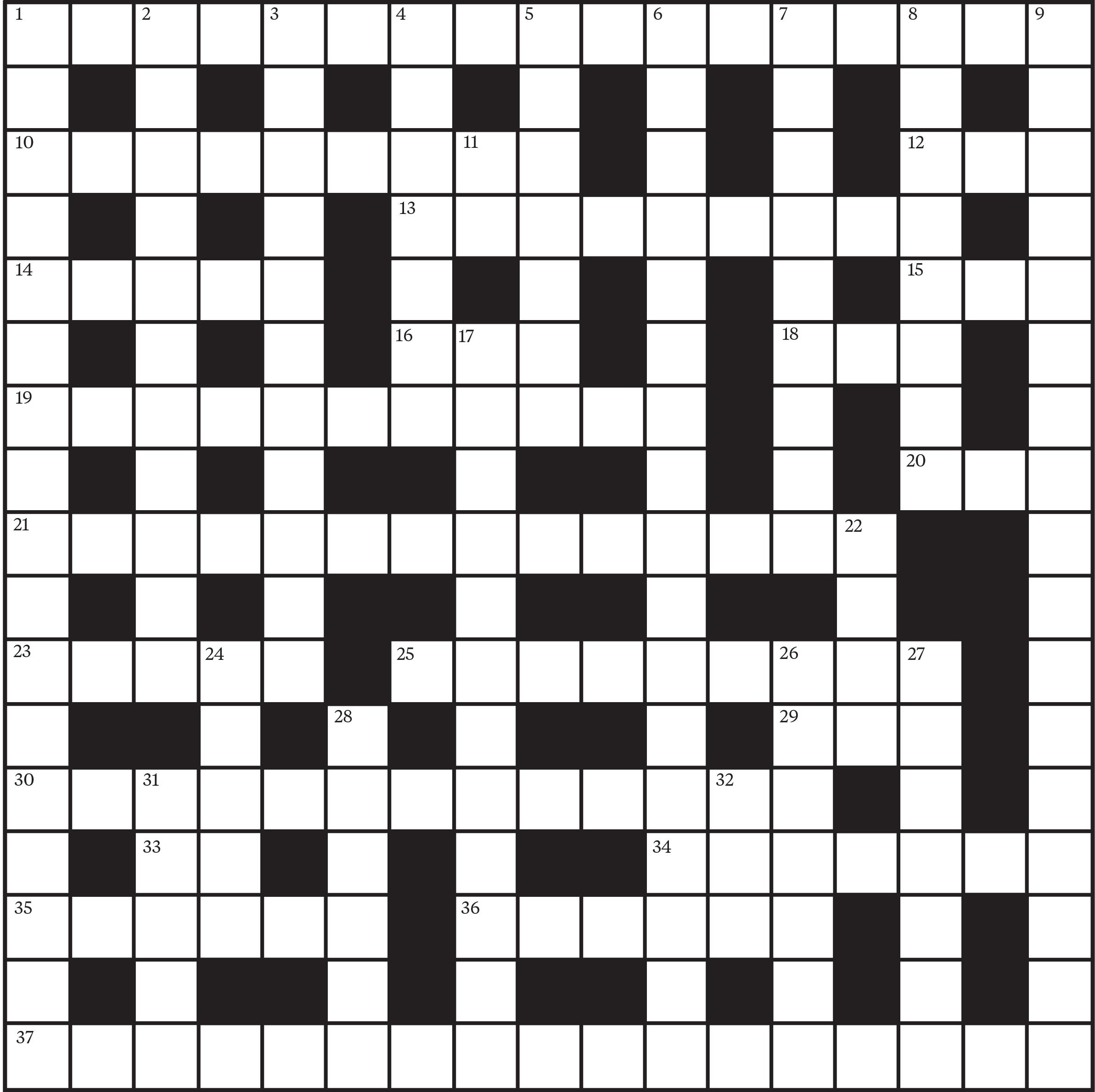
ACROSS
1. Antibiotic used to treat various bacterial infections (17)
10. Reasserts (9)
12. Winter sport equipment (3)
13. Legal modification (9)
14. Sound (5)
15. Hospital department for critical patients (1.1.1)
16. International sensitivity index. (1.1.1)
18. Prohibition (3)
19. Relating to the examination of the nasal passages (11)
20. Tumor-infiltrating lymphocytes (1.1.1)
21. Infrequent or very light menstruation (14)
23. Easy and comfortable (5)
25. The consumption of raw flesh, particularly raw meat and fish (9)
29. Adrenoleukodystrophy (1.1.1)
30. Not spoken clearly (13)
33. Feasibility Study (1.1)
34. Topmost (7)
35. Narrow connections between two larger bodies or parts (6)
36. Lack of moral principle (6)
37. Neurasthenia (7.10)
DOWN
1. Blockage of blood flow to the heart (8.9)
2. Debts (11)
3. Foot massage therapy (11)
4. Unpredictable (7)
5. A berry from dog rose, rich in flavonoids and vitamin C (7)
6. Irregular heart rhythm (17)
7. The zygomatic bone (9)
8. Innate behaviour (8)
9. Procedure involving the administration of anaesthesia near the spinal cord (8.9)
11. One thousandth of a meter (2)
17. Sleepwalk (12)
22. Corrosive substance (4)
24. Rough (5)
26. Tech tools or devices (7)
27. Tiny air sacs in the lungs (7)
28. Surroundings; environment (6)
31. Later (5)
32. Ethical Intuitive Introvert (1.1.1)
Access to online CPD
FREE for NSWNMA members and student members
Hundreds of hours of FREE CPD online
Meeting your Continuing Professional Development (CPD) obligations is now even easier with this great benefit for NSWNMA members. As a financial member you have access to over 200 CPD modules – all part of your Association membership.
FREE access to over 200 CPD modules online
Highly visual and interactive modules you can do at your own pace
New modules added regularly
Your own personalised ePortfolio and CPD tracker so you can provide evidence to the Nursing and Midwifery Board of Australia (NMBA) of participation in CPD annually.
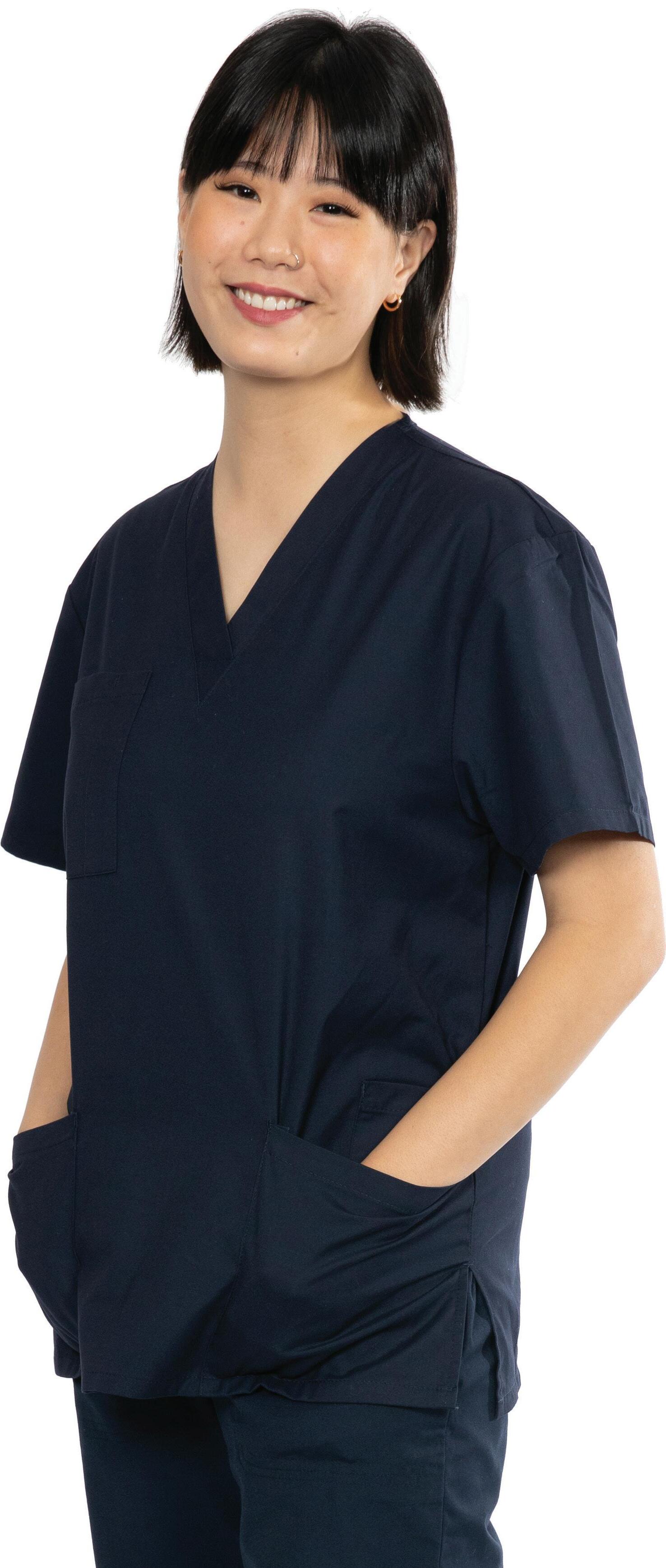


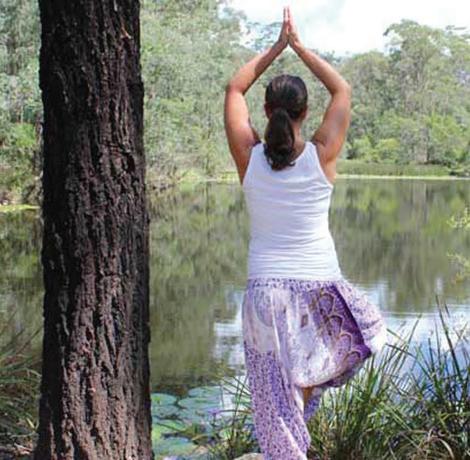



Recruit a new member and you could win a 4-night wellness retreat at Billabong Retreat. You and a friend will stay in a Treehouse Ensuite Cabin with the following inclusions:
All meals, drinks and snacks
Daily yoga and meditation
Access to retreat program during stay
Two x spa treatments per person (per stay)
One x infrared sauna session per person.
Every member you sign up over the year gives you an entry in the draw!
Award winning Billabong Retreat was founded and opened in 2010. The 26 room eco retreat is located on 12 acres of natural bushland in Maraylya, just 45 minutes from the Sydney CBD. The wellness haven delivers day retreats as well as overnight retreats that include delicious wholefoods, daily yoga, evening meditation and education workshops to empower and inspire. For more information visit billabongretreat.com.au
RECRUITERS NOTE: Join online at www.nswnma.asn.au
If you refer a member to join online, make sure you ask them to put your name and workplace on the online application form, so you will be entered in the draw.
